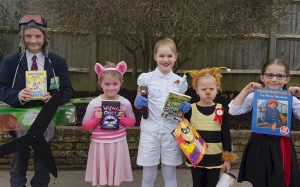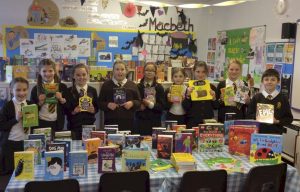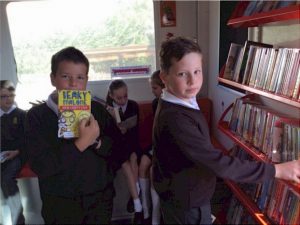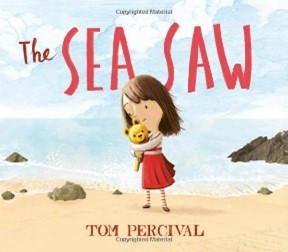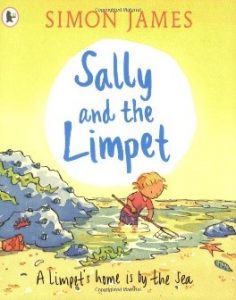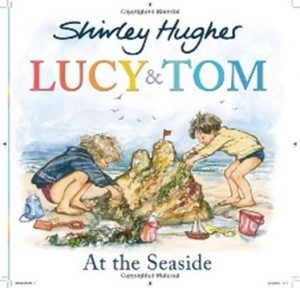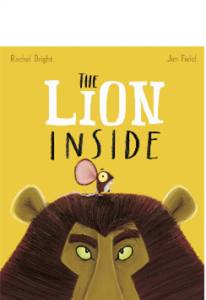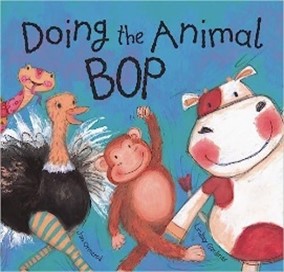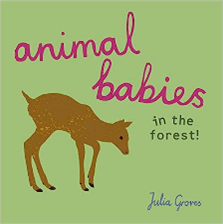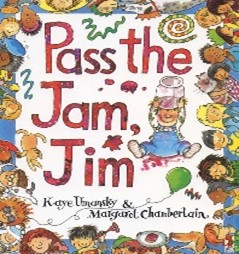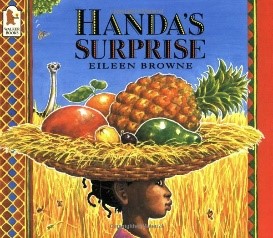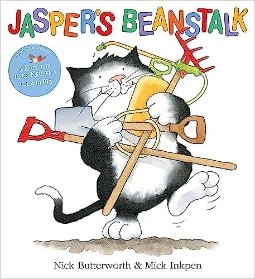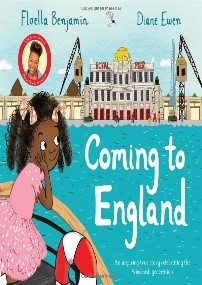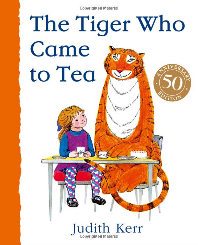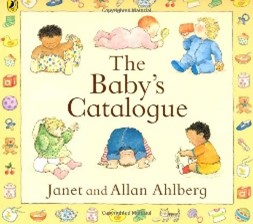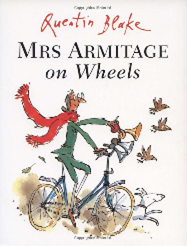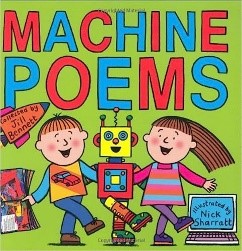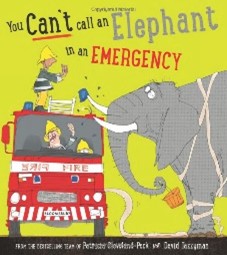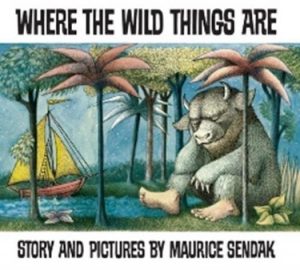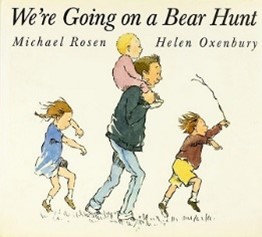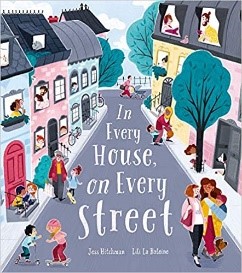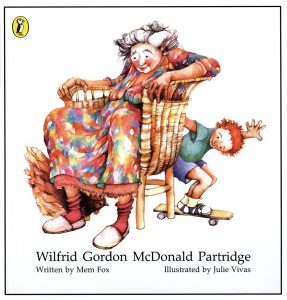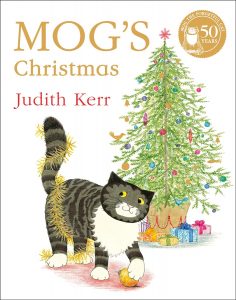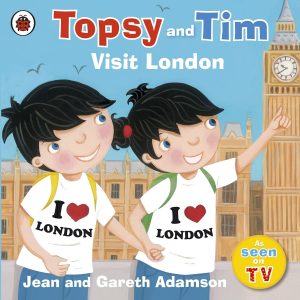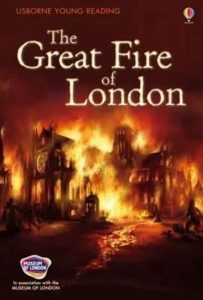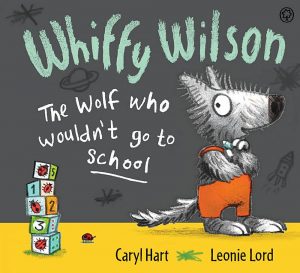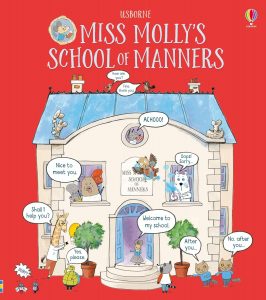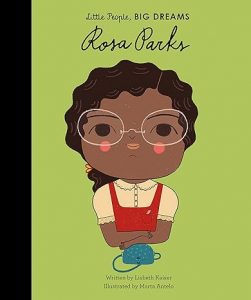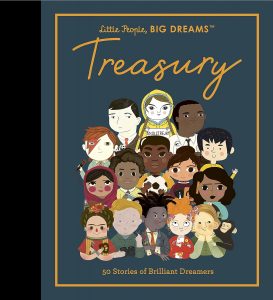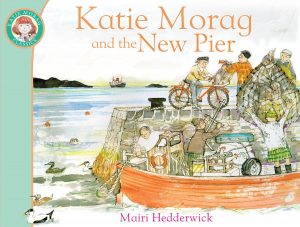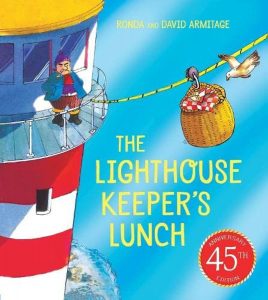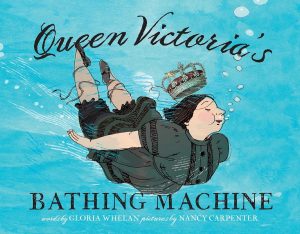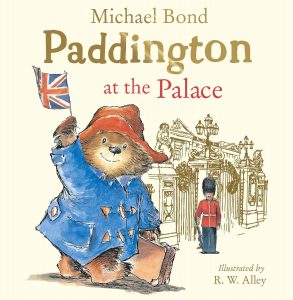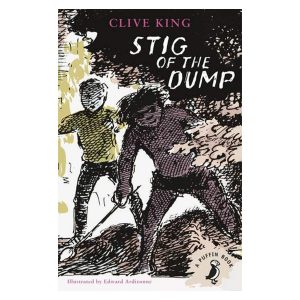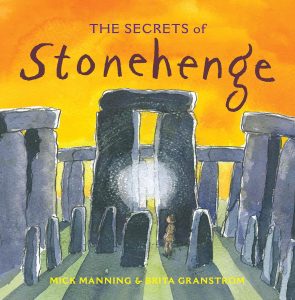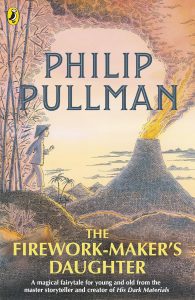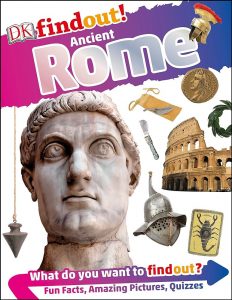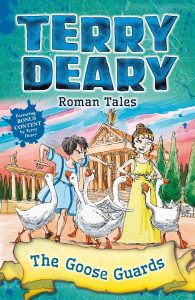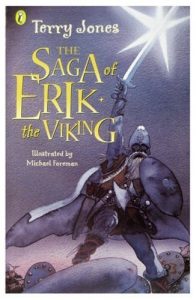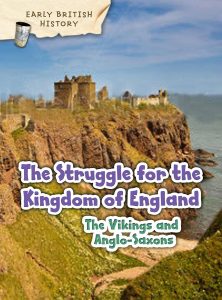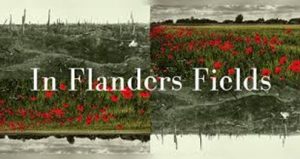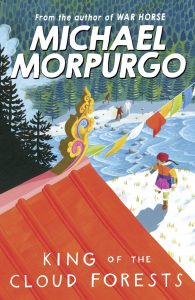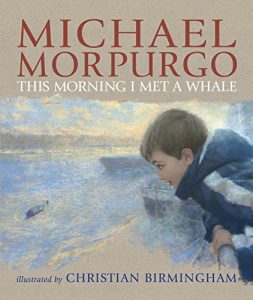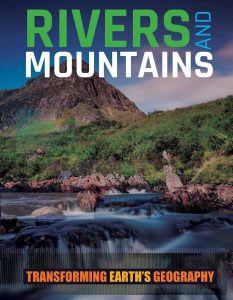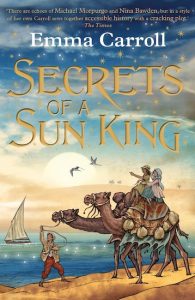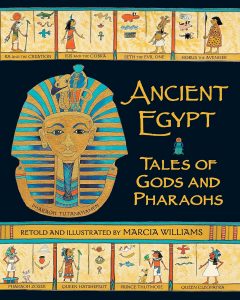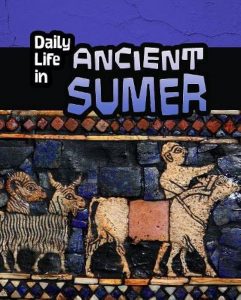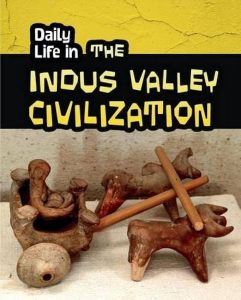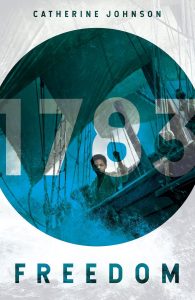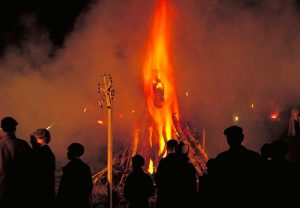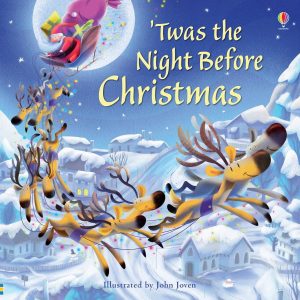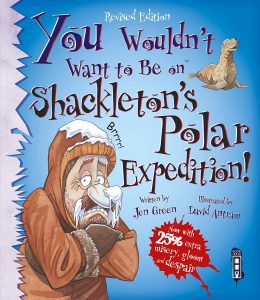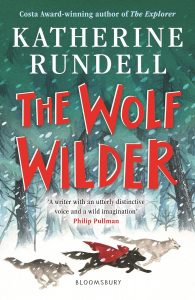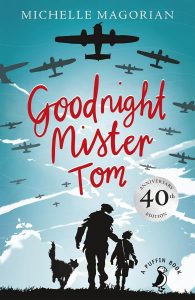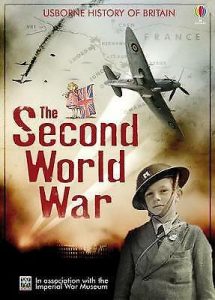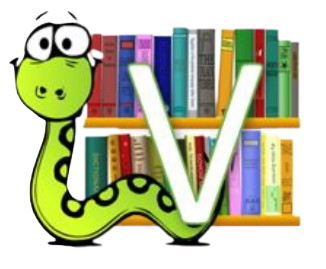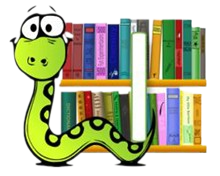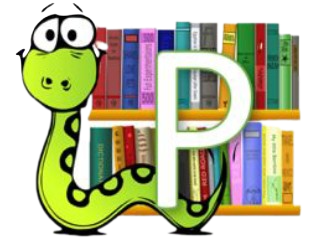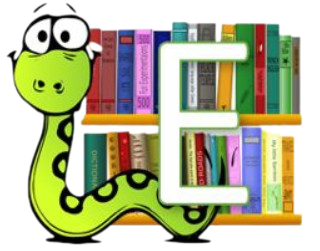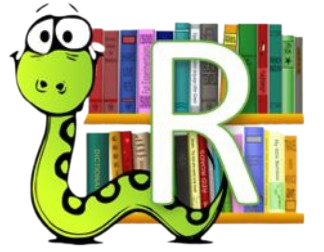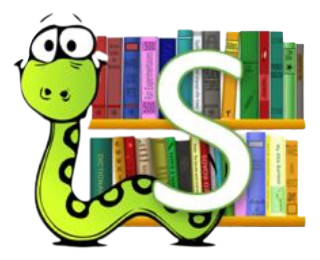
 English sits at the heart of our curriculum. It is through talking, reading, writing and vocabulary acquisition that children learn to communicate ideas, express themselves deeply and to understand the world in which they live. When our children leave Sandhurst, we want them to continue to aim high and to read for enjoyment, having had access to a wide range of text types, genres and authors to challenge them and to make informed opinions about their favourites. At Sandhurst, we place reading at the centre of our curriculum because we believe that it is the foundation of every child’s learning and the pathway to gaining the knowledge that leads to lifelong love and enjoyment of books.
English sits at the heart of our curriculum. It is through talking, reading, writing and vocabulary acquisition that children learn to communicate ideas, express themselves deeply and to understand the world in which they live. When our children leave Sandhurst, we want them to continue to aim high and to read for enjoyment, having had access to a wide range of text types, genres and authors to challenge them and to make informed opinions about their favourites. At Sandhurst, we place reading at the centre of our curriculum because we believe that it is the foundation of every child’s learning and the pathway to gaining the knowledge that leads to lifelong love and enjoyment of books.
We want children to develop their own individual flair, confidence and accuracy and to know that we write for a variety of purposes and audiences. We aim to expose our children to a wide range of vocabulary so that they able to decipher new words and then challenge themselves to use them knowledgably in a variety of ways to communicate with others. At Sandhurst, we know that writing is an important skill for life needed for communicating with others in different ways including: letter writing, stories, poetry and sharing information. Therefore, it is our aim is that every child will leave Sandhurst as a confident, happy and skilled writer by delivering a clear and progressive writing curriculum, which is underpinned by strong oracy, collaborative learning, reading skills, effective spelling and grammar teaching and fosters and enjoyment and love of reading and writing.
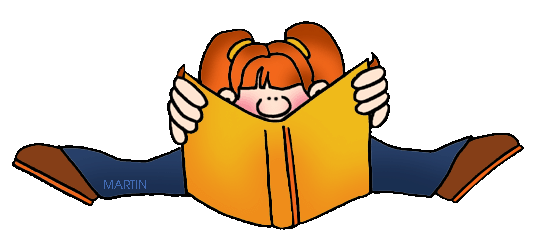 English sits at the heart of our curriculum. It is through talking, reading, writing and vocabulary acquisition that children learn to communicate ideas, express themselves deeply and to understand the world in which they live. When our children leave Sandhurst, we want them to continue to aim high and to read for enjoyment, having had access to a wide range of text types, genres and authors to challenge them and to make informed opinions about their favourites. At Sandhurst, we place reading at the centre of our curriculum because we believe that it is the foundation of every child’s learning and the pathway to gaining the knowledge that leads to lifelong love and enjoyment of books.
English sits at the heart of our curriculum. It is through talking, reading, writing and vocabulary acquisition that children learn to communicate ideas, express themselves deeply and to understand the world in which they live. When our children leave Sandhurst, we want them to continue to aim high and to read for enjoyment, having had access to a wide range of text types, genres and authors to challenge them and to make informed opinions about their favourites. At Sandhurst, we place reading at the centre of our curriculum because we believe that it is the foundation of every child’s learning and the pathway to gaining the knowledge that leads to lifelong love and enjoyment of books.
Accelerated Reader
When children have successfully completed the phonics program, they select books at their level using the Accelerated Reader program (ZPD). The Accelerated Reader (A.R.) program supports their independence in selecting books that are appropriately pitched to promote fluency and comprehension skills at exactly the right level. This is achieved through termly assessments using accelerated reader and children completing star reader quizzes. Using Accelerated Reader also helps to secure the very best progress from each and every child, whilst still allowing plenty of choice and autonomy is being able to select books that appeal to their individual interests. Children have access to a range of beautiful books in our library which have all been cross- referenced in accordance with the corresponding ZPD.
Whole-Class Reading
All children participate in Whole-Class Reading lessons, in addition to their whole-class and story-time sessions. These lessons are focused around a class text or appropriately chosen text that links with the pupil learning in a topic area. A wide range of genres including poetry and non-fiction are also used to extend the learning.
Please view our whole school reading text map.
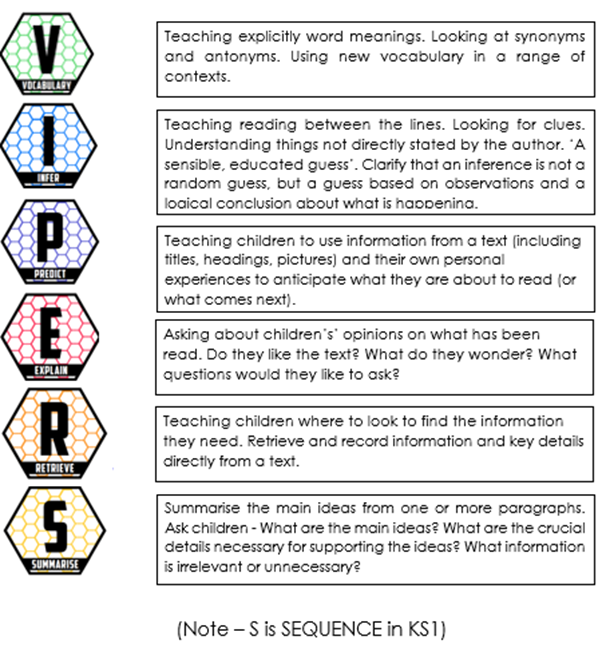 As a school, we use VIPERS as a structure during our reading lessons. This ensures that all children are working towards the same learning objective at the same time. Children who find reading tricky are able to ‘keep up’ rather than ‘catch up’, as the texts used are modelled by the class teacher before completing the related task. The lessons are structured to enable the children to develop their reading skills. Clear links with pupil writing, speaking and listening is also fostered and developed.
As a school, we use VIPERS as a structure during our reading lessons. This ensures that all children are working towards the same learning objective at the same time. Children who find reading tricky are able to ‘keep up’ rather than ‘catch up’, as the texts used are modelled by the class teacher before completing the related task. The lessons are structured to enable the children to develop their reading skills. Clear links with pupil writing, speaking and listening is also fostered and developed.
Reading at Home
We recognise children need constant practice to become established, fluent readers and therefore place a strong emphasis on reading at home in addition to school. All children, from EYFS to Year 6, are expected to read regularly over the week and record their reading in a reading record book. Parents are encouraged to support children in this. Teaching staff monitor children’s reading habits and book choices, working with parents to inspire our pupils to become great readers. The school promotes and celebrates reading at home through our “Read and Discover” scheme. Children and parents record children’s home reading in their reading diaries and when a child reaches ten consecutive reads, they receive a reward.
| Number of reads | Reward |
| First 10 consecutive reads | Bronze award |
| Next 10 consecutive reads | Silver award |
| Next 10 consecutive reads | Gold award |
| Next 10 Consecutive reads | Raffle ticket (entered into the end of term draw for the chance to buy a brand-new book of choice) |
| Read every day for one whole term | Platinum award and entered into a prize draw for the chance to win £30.00 to spend on books at the end of the school year. |
In parallel with this, we celebrate children’s reading through sharing stories, partner classes, assemblies, Summer Reading Challenge, awards and World Book Day.
Reading for Pleasure and Purpose
We are striving to become a reading school where all children and adults read for pleasure and can share in the joy of books. Dedicated slots in the timetable have been allocated for this to occur over the week. Furthermore, we promote the concept of reading for purpose. We understand that in order to develop the greatest level of comprehension, we need to provide plentiful opportunities for children to approach reading with a purposeful appreciation. To support both reading for pleasure and purpose, we ensure our library is well stocked, which includes fiction, non-fiction, poetry, magazines, newspapers. In addition, our year 6 children are paired as reading buddies for our EYFS children.
Storytime
At Sandhurst Primary school, we passionately believe in the “magic of Storytime.” Stories provide shared contexts for rich, natural language development from a very young age, and throughout the primary years. The 'magic' lies in the way stories potentially engage children's hearts and minds, as people and as thinkers, with issues that are relevant, real and important to them. Therefore, children receive a dedicated story time for twenty minute every day.
Our curriculum provides opportunities to see what knowledge children have retained and what skills they have mastered through clear curriculum endpoints (as detailed on our sequential reading curriculum) which help teachers to make judgments about each child’s progress and attainment. Our phonics programme has a rigorous 6-weekly assessment schedule. Using Accelerated reader, pupils are assessed on a termly basis and take Star Reader quizzes after each book read. This progress is tracked and monitored by class Teachers. We also conduct three formative assessments throughout the year for Reading comprehension in addition to the year 2 and 6 statutory assessments.
Aspirations for the future
We want our pupils to develop a love for reading and as a result remind them, if they continue to aim high, as a historian, they could become an editor, a writer, an actor or a presenter and many other exciting professions!
Nightingale
Term 1
Term 2
Term 3
Term 4
Term 5
Term 6
Darwin
Term 1
Term 2
Term 3
Term 4
Term 5
Term 6
Pankhurst
Term 1
Term 2
Term 3
Term 4
Term 5
Term 6
Shakespeare
Term 1
Term 2
Term 3
Term 4
Term 5
Term 6
Churchill
Term 1
Term 2
Term 3
Term 4
Term 5
Term 6
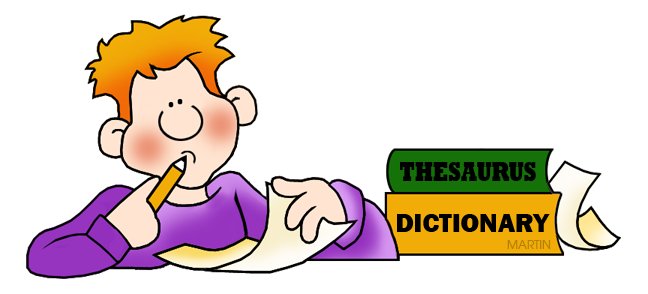 English sits at the heart of our curriculum. It is through talking, reading, writing and vocabulary acquisition that children learn to communicate ideas, express themselves deeply and to understand the world in which they live.
English sits at the heart of our curriculum. It is through talking, reading, writing and vocabulary acquisition that children learn to communicate ideas, express themselves deeply and to understand the world in which they live.
We want children to develop their own individual flair, confidence and accuracy and to know that we write for a variety of purposes and audiences. We aim to expose our children to a wide range of vocabulary so that they able to decipher new words and then challenge themselves to use them knowledgably in a variety of ways to communicate with others. At Sandhurst, we know that writing is an important skill for life needed for communicating with others in different ways including: letter writing, stories, poetry and sharing information. Therefore, it is our aim is that every child will leave Sandhurst as a confident, happy and skilled writer by delivering a clear and progressive writing curriculum, which is underpinned by strong oracy, collaborative learning, reading skills, effective spelling and grammar teaching and fosters and enjoyment and love of reading and writing.
At Sandhurst a clearly structured and developed writing curriculum, that spans other subject areas, enables children to write for different audiences and purposes.
Please see our sequential writing curriculum across the whole school.
Writing begins in EYFS, where the environment provides opportunities for children to mark make using a variety of medium and stimuli. We ensure that pupils are ready to write by promoting a range of activities that support gross and fine motors skills. RWI introduces children to the process of segmenting words into sequential sounds, both orally and then through developing grapheme phoneme correspondence for children to be skilled in word writing. In Key Stage 1, children are taught the skills of writing through oracy, modelling, shared writing and discussion. This supports them to build the structure of a text and transition towards writing independently in the chosen genre. In Key Stage 2, children write in various genres for a range of purposes. They analyse the model text and unpick the grammatical features and organisation, to apply these in their own writing. In addition, discreet Grammar, punctuation and spelling lessons are taught.
Throughout all year groups, we teach writing through engaging and challenging topic-based texts. This supports them in the application of vocabulary and structure. Children are given termly enrichment opportunities to promote and inspire writing of a high quality across the curriculum.
Emphasis is placed on the modelling of writing and the crafting of sentences by teachers. This always enables pupils to see high quality writing, which in turn enables them to become independent writers. Throughout the session, intentional monitoring allows pupils to receive timely and immediate feedback on their writing progression as they develop their “Big Write” extended piece at least fortnightly.
Spelling
Our spelling curriculum follows on from the Read Write Inc Phonics Programme, which is taught in Reception, Year 1 and Year 2, and develops the children’s understanding of the spelling rules and the common exception words (referred to as “red words”) required in each year group. From Years 2 - 6, we follow the Read Write Inc. Spelling programme, a 15 minutes-a-day programme which uses a proven approach underpinned by phonics, fast–paced lessons and an online subscription. Read Write Inc. Spelling ensures spelling success for children who are fluent readers.
Handwriting
Children in EYFS practise letter formation as part of their daily phonics. Print is taught in EYFS, and this is carried on into the start of year 1, before cursive is then introduced during Year 1. From Year 2 onwards, cursive writing is secured, along with mastering techniques for joining and fluency.
In Key Stage 2, children continue to work on joining, legibility and writing at length, receiving a pen license when they can fluently write in a neat, cursive style throughout the curriculum. Handwriting progress is celebrated across the school through handwriting awards. Formal teaching of handwriting is carried out regularly the number of lessons slowly decrease as with repeated practise children’s automaticity improves.
Our curriculum provides opportunities to see what knowledge children have retained and what skills they have mastered through clear curriculum endpoints (as detailed in our sequential writing curriculum) which helps teachers to make judgments about each child’s progress and attainment. At the end of each term, children will complete an assessment piece of writing. As a school, we conduct internal moderations, as well as external moderations with our collaboration schools. We also have three formative assessment points across the year. Furthermore, learning of specific spellings is consolidated further as part of weekly home learning, as children use the Sumdog platform to practise learning carefully constructed word lists – an end of week review aims to capture their progress and support with planning any next steps.
Aspirations for the future
We want our pupils to develop a love for writing and as a result remind them, if they continue to aim high, as a writer, they could become an author, a poet, a journalist, an editor, a court transcript writer, a song writer, a screen play writer, a blogger, a marketing executive, a teacher and many other exciting professions!

Cornerstones Curriculum
We provide a creative curriculum based around the Cornerstones Curriculum, a nationally recognised approach for delivering outstanding learning opportunities for children.
What is the Cornerstones Curriculum?
The Cornerstones Curriculum is a creative and thematic approach to learning that is mapped to the Primary National Curriculum to ensure comprehensive coverage of national expectations. Our new curriculum will be delivered through Imaginative Learning Projects (ILPs) which will provide a rich menu of exciting and motivating learning activities that make creative links between all aspects of our children’s learning.
We believe children learn better when they are encouraged to use their imagination and apply their learning to engaging contexts. Our new curriculum will provide lots of learning challenges throughout the academic year that will require children to solve problems, apply themselves creatively and express their knowledge and understanding effectively across the curriculum.
Cornerstones also provide a rigorous essential skills framework that outlines the end of year expectations in all subjects. These essential skills are tied to activities and are age related so that staff can track children’s progress and identify their individual learning needs.
How it Works?
Children will progress through four stages of learning in each ILP – Engage, Develop, Innovate and Express. To find out more about these stages please click on the link through to Cornerstones website:
https://cornerstoneseducation.co.uk/why-cornerstones/
Please find downloadable PDF versions of the Information available for the English Curriculum.
Cornerstones - English Curriculum Overview
Reading
Year 6
|
Topic |
 |
|||||
|
Freedom 1783 by Catherine Johnson |
The Bonfire at Night by Enid Blyton In Flanders Fields by John McCrae Twas the Night Before Christmas by Clement Clarke Moore |
You Wouldn't Want to Be on Shackleton's Polar Expedition! by Jen Green.
|
The Wolf Wilder by Katherine Rundell |
Goodnight Mr Tom by Michelle Magorian |
Year 6 end of year performance. The Second World War (Usborne History of Britain) by Henry Brook |
|
|
Reading Skill and VIPERS |
Term 1 (Fiction) |
Term 2 (Poetry and performance) |
Term 3 (Non-Fiction) |
Term 4 (Fiction) |
Term 5 (Fiction) |
Term 6 (Poetry and performance) and Non-Fiction |
| Children can… | ||||||
|
Decoding and word reading |
Feel confident in decoding most new words, using contextual clues and independently using a dictionary or thesaurus to check meaning. Apply their knowledge of root words to read aloud fluently and suggest meanings for new words from familiar roots. |
Use contextual clues to explain meanings of new words, in a range of poems.
|
Confidently use contextual clues to explain meanings of new words, in non-fiction texts, and suggest alternatives. |
Independently use contextual clues and knowledge of root words to suggest meanings and pronunciations of new words and words from other contexts and cultures.
|
Find root meanings of new words and explain how prefixes and suffixes change the meaning and tense. |
Use correct and confident pronunciation for new words, based on sound understanding of root words, morphology and syntax |
|
Fluency and phrasing
|
Begin to read a range of text types with confidence and expression and can make sensible attempts at unfamiliar words. Use their intonation to show their understanding of the text. |
Confidently perform texts (including poems learnt by heart) using a wide range of devices to engage the audience and for effect. Begin to learn and recite a range of poetry by heart. |
Read a range of text types (including non-fiction) with expression and can make sensible attempts at unfamiliar words.
|
Use their intonation to show their understanding of the text. Begin to adapt their reading tone to different voices and emotions.
|
Read a range of text types fluently, with confidence and expression, making sensible attempts at unfamiliar words based on known spelling rules and root words. Notice and respond to punctuation and phrasing when reading aloud, to gain, maintain and monitor the interest of the listener. Begin to read and explain the majority of the Y5- 6 spelling words. |
Confidently learn and recite a playscript by heart. By reading aloud or by performing poems or plays. Read and explain all of the Y5-6 spelling words |
|
Vocabulary |
Identify and discuss new vocabulary and independently find definitions. Explain feelings or emotions brought about by an author’s choice of words. Use a thesaurus to suggest alternatives or improve sentences. Identify the differences between US and British English to help explain the context of a text. |
Analyse and evaluate the use of language, including figurative language and how it is used for effect, using technical terminology such as metaphor, simile, analogy, imagery, style and effect. Explain feelings or emotions brought about by a poet’s choice of words. |
Identify and discuss new vocabulary and independently find definitions and alternatives. Suggest definitions for words based on the context of the sentence. Identify words or phrases from the text which link to given meanings using ‘find and copy’-style question stems.
|
Identify and discuss new vocabulary and suggest synonyms and antonyms for discussed words. Suggest definitions for words based on the context of the sentence and inferences around the text. Children can explain how an author’s choice of words and meaning creates a particular emotion or opinion in the reader. |
Identify and discuss new vocabulary and suggest synonyms and antonyms for discussed words and find examples from the text to show given emotions or expressions. Write definitions independently to show the meaning of words based upon their use in context. Identify multiple words or phrases from a text which show or suggest given meanings using ‘find and copy’ question stems. Explain how a word or phrase affects their opinion of a character or story. |
Write their own definitions for new words based on thorough dictionary experience and using contextual clues from within and around the sentences in the text. Identify synonymous and antonymous words or phrases from the text which link to given meanings using ‘find and copy’-style question stems. Answer questions using VIPER stems to explain their understanding and inferences based on specific vocabulary choices. |
|
Inference
|
Confidently draw inferences independently, justifying with textual evidence. Confidently identify and discuss themes Identify words which show or suggest an emotion in a character. |
Independently justify inferences from poems, using more than one piece of evidence.
|
Draw inferences from pictures and use topical knowledge and understanding to support. |
Draw conclusions about characters’ opinions based on understanding of their thoughts and dialogue Identify phrases and events which support their ideas about a character.
|
Discuss how characters change and develop through texts by drawing inferences based on indirect clues. |
Infer detail based on independent reading and comprehension of the text, and drawing on their own experiences. |
|
Prediction
|
Make predictions about a text based on the cover and details from the blurb. Predict what will happen in the next chapter based on events. |
Make predictions about the setting, context, characters and events of the poem based on clues. Predict the responses and reactions of different characters based on evidence and inferences from the start of the poem. |
Write longer prediction answers about a based on evidence from the text, and using both stated and implied detail. |
Interpret the clues found in the narrative and make their own predictions about what has happened. Use clues from the text to predict and write a solution to the mystery. |
Make predictions about the setting, context, characters and events of the text based on clues from the cover and blurb.
|
Make a range of alternate predictions, and justify these with text evidence, showing an understanding of cause and effect. |
|
Explanation |
Share their opinions of the texts, building upon their own ideas and others. Discuss how books are structured in different ways and make links within and across other texts. Make links to fact and opinion, discussing and evaluating the authors us of language, considering the impact on the reader. |
Read a variety of texts through class reading spines including a range of poetry. Understand how and why figurative language is used within poetry. |
Make links between studied topics in Geography or History sessions and texts being studied, making links and justifying their explanations using knowledge and understanding of the text’s context and background.
|
Independently make links within a text and across other texts read in class. Confidently participate in discussions about books that are read to them and those that they are reading independently. Confidently explain the language choices of an author and explain their impact on the reader, with relevant evidence. Identify and talk about figurative language and its impact on the reader. Distinguish between fact and opinion, expressing their point of view. |
Evaluate how authors use language, discussing the impact of words and phrases on the reader. Explain the language choices of an author and the impact on the reader, with relevant evidence.
|
Confidently distinguish between fact and opinion, expressing their point of view, providing evidence to support their viewpoints |
|
Retrieve |
Retrieve key details from memory of the text and use skim-and-scan reading skills to find relevant details in a story. With support, recall prior events of the story. |
Build upon previous skills to locate the poet’s viewpoint, retrieving key details and to find quotations to support idea. Build upon previous skills to skim and scan to find a quote to suggest how the poet felt. |
Retrieve, record and present information from a variety of increasingly complex nonfiction texts.
|
Make and use notes based on chapters read and class discussions. Confidently recall and retrieve key details from previous chapters, as well as making comparisons between texts.
|
Make justifications for their views, using skimming and scanning and text marking to support answers, using accurate quotes from the text. |
Use non-fiction materials for purposeful information retrieval (e.g. in reading history, geography and science textbooks) and in contexts where pupils are genuinely motivated to find out information (e.g. reading information leaflets before a gallery or museum visit or reading a theatre programme or review). |
|
Sequence and Summarise |
Independently summarise and explain the events of a chapter. Refer back to a section of a text in order to sequence the events. |
Summarise and explain the events of a poem. |
Write a synopsis of a chapter in their own words. Sequence the events of a text from given statements. |
Summarise events of a chapter or whole text in a given number of words Can sequence broader text events from memory.
|
Make comparisons across different books |
Sequence events from given statements, as well as through unpicking of a longer section of texts to independently write summaries and sequences of events.
|
Year 5
|
Topic |
 |
|||||
|
Texts |
Freedom 1783 by Catherine Johnson |
The Bonfire at Night by Enid Blyton In Flanders Fields by John McCrae Twas the Night Before Christmas by Clement Clarke Moore Freedom 1783 by Catherine Johnson |
You Wouldn't Want to Be on Shackleton's Polar Expedition! by Jen Green.
|
The Wolf Wilder by Katherine Rundell |
Goodnight Mr Tom by Michelle Magorian |
The Second World War (Usborne History of Britain) by Henry Brook Goodnight Mr Tom - cont |
|
Reading Skill and VIPERS |
Term 1 Fiction |
Term 2 (Poetry and fiction continued) |
Term 3 Non-fiction |
Term 4 Fiction |
Term 5 Fiction |
Term 6 Non-Fiction and Fiction continued |
| Children can… | ||||||
|
Decoding and word reading |
Read most words fluently and attempt to decode any unfamiliar words using their contextual clues. Discuss new vocabulary, show definition and also read the word during ‘read to’ sessions and teaching to ensure correct pronunciation. |
Read most words fluently and attempt to decode any unfamiliar words using their contextual clues. Identify and discuss new vocabulary with support find the definition. Read the word during ‘read to’ sessions and teaching to ensure correct pronunciation Begin to ask questions to develop their own understanding. |
Confidently read most words fluently and attempt to decode any unfamiliar words and topical terminology using their contextual clues. Use the words before and after to check for accuracy. Apply their growing knowledge of root words, prefixes and suffixes/ word endings to read aloud fluently. Skim and scan for spelling patterns which they have learnt, to identify that pattern in context. Identify and discuss new vocabulary and topical vocabulary (pre-empted by teacher), independently find the definition. Read the word during ‘read to’ sessions and teaching to ensure correct pronunciation |
Confidently decode words using contextual clues or if unable to use contextual clues, children independently use a dictionary. Read most Y5/ Y6 exception words, discussing the unusual correspondences between spelling and sound
|
Read most Y5/ Y6 exception words, Identify and discuss new vocabulary (pre-empted by teacher), independently find the definition. Check correct pronunciation during ‘read aloud’ sessions. |
Confidently decode words using contextual clues or independently use a dictionary. Confidently apply their knowledge of root words, prefixes and suffixes/ word endings, to read aloud fluently.
|
|
Fluency and phrasing
|
Read a wider range of texts. Begin to read with accuracy and at a reasonable speaking pace. Read aloud sessions to support development or reading. Read different texts modelling different intonations. Complete independent reading and then discuss what they have read. |
Read examples of poetry as well as fiction texts When reading poetry aloud, continually show an awareness of the audience using intonation, tone, volume and action. |
Read with accuracy and at a reasonable speaking pace, reading most words effortlessly and work out how to pronounce unfamiliar and topical words and terminology. Complete independent reading and then discuss what they have read.
|
Read with accuracy and at a reasonable speaking pace, reading most words effortlessly and work out how to pronounce unfamiliar words. Discuss differences in text and how they are read.
|
Read with accuracy and at a reasonable speaking pace, reading most words effortlessly and work out how to pronounce unfamiliar words. Use the context of the word and knowledge of spelling patterns.
|
Read a wide range of texts. Confidently read with accuracy and at a reasonable speaking pace, reading most words effortlessly and work out how to pronounce unfamiliar words. Use the context of the word and knowledge of spelling patterns Complete independent reading and then discuss what they have read. Confidently sight-read all Y3-4 exception words and Y5-6 words (and similar) with automaticity. |
|
Vocabulary
|
With support, discuss their understanding of words in context. Consider together as a class why the author used a particular word or phrase.
|
Begin to locate the context of a word to clarify its meaning. Begin to justify independently what effect the poet is trying to achieve for the reader.
|
Begin to confidently use a dictionary or thesaurus to support understanding of challenging vocabulary meaning within context.
|
Discuss their understanding of words in context and ask questions which develop their understanding. Independently use a dictionary or thesaurus to support understanding of unfamiliar words within context. Begin to independently evaluate the author’s use of language and explain its impact on the reader, using evidence to support their opinions. |
Discuss their understanding of words in context and challenge viewpoints appropriately. Confidently use a dictionary or thesaurus to support meaning. Discuss their understanding of the authors language choices and explore the meaning of words in context. Discuss vocabulary used by the author to create effect including figurative language. |
Use a dictionary or thesaurus to support and develop meaning Discuss vocabulary and figurative language used by the author to create effect and to consider its impact on the reader. Explore the meaning of unfamiliar words. |
|
Inference
|
Begin to draw inferences as a class during discussions. With support, begin to discuss themes across a range of texts |
Begin to draw inferences independently, justifying with textual evidence form poems. With support, identify and discuss themes across a range of poems.
|
Look for a quote to justify a particular point.
|
Draw inferences independently, justifying with textual evidence. Be given a focal point when reading together and find their evidence independently. Identify and discuss themes across a range of texts. |
Draw inferences independently, justifying with textual evidence. Independently identify and discuss themes across a range of texts. |
Draw inferences independently, justifying with textual evidence.
|
|
Prediction
|
Make predictions from implied details, both before and after events. |
Use opportunities to make predictions as to why the author wrote their particular poem. Look into the context of. |
Make predictions from implied details, both before and after events.
|
Make predictions from implied details, both before and after events.
|
Make predictions from implied details, both before and after events Explore what could happen next independently Can justify why they think this using evidence from the text to support thought process and use of inference. |
Confidently make predictions from implied details, both before and after events.
|
|
Explanation
|
Share their opinions of the texts.
|
Begin to identify and discuss themes across a range of poems and fiction texts Read a variety of texts through class reading (fiction and poetry) Share their opinions of the texts, beginning to build upon their own ideas and others. Begin to identify and discuss figurative language used in poetry |
Discuss how books, especially non-fiction books are structured in different ways and make links to other texts. Distinguish the difference between fact and opinion.
|
Share their opinions of the texts, building upon their own ideas and others. Make links to fact and opinion, discussing the author’s use of language. Begin to understand why figurative language is used within certain texts. |
Independently share their opinions of the texts, building upon their own ideas and others. Make links to fact and opinion, discussing and evaluating the author’s use of language, considering the impact on the reader. Understand why figurative language is used within certain texts. |
Independently make links to fact and opinion, discussing and evaluating the authors us of language, considering the impact on the reader. Understand how and why figurative language is used within certain texts. |
|
Retrieve
|
Answer questions which require them to justify their original answers. Discuss the meaning of quotes from the text Begin to locate the authors viewpoint. Justify their interpretation of the authors viewpoint |
Answer questions based on vocabulary, inference, retrieve and summarise. Locate the poets viewpoint, retrieving key details and begin to find quotations to support idea. Can they interpret the poets meaning behind the poem? |
Begin to ask questions which develop their understanding Skim and scan the text to find a quote to support the class’s discussion. Begin to independently retrieve key details which develop their understanding. To use knowledge of texts and organisation devices to retrieve, record and discuss information from non-fiction texts.
|
Independently retrieve key details which develop their understanding.
|
Independently retrieve key details and quotes which develop their understanding. Locate the author’s viewpoint, retrieving key details and to find quotations to support idea. |
Confidently and independently retrieve key details and quotes which develop their understanding. Answer questions based on the author and text that they are reading in class.
|
|
Sequence and Summarise
|
As a class summarise a main idea within a paragraph. Order events within a chapter that they have just read. |
Summarise ideas and themes from poems Begin to make links and comparisons within and across texts. Read a wider range of texts. |
Summarise the book that they are reading, considering possible themes. Link themes to other books which they have read independently or as a class?
|
Summarise and make comparisons within the book. Order events throughout a book, referring to their notes. |
Summarise and make comparisons within the book, considering what happened before and after. Order events throughout a book, using the skimming and scanning technique to check sequence of events. |
Order events, such as chapter headings and justify their answers. |
Year 4
|
Topic |
 |
 |
 |
|||
|
Texts |
The Saga of Erik the Viking Beowulf
|
Performance (Class Assembly/ Christmas performance) In Flanders Fields by John McCrae The Anglo-Saxons, Vikings and Normans: Settlers and Invaders of Britain by Ben Hubbard and Anita Ganeri |
King of the Cloud Forests
|
How to survive on a mountain This morning I met a whale |
Secrets of a Sun King |
Daily Life in Ancient Sumer Daily Life in Ancient Egypt Daily Life in the Indus Valley |
|
Reading Skill and VIPERS |
Term 1 Fiction |
Term 2 (Poetry and performance) and Non-Fiction |
Term 3 Fiction |
Term 4 Non-Fiction |
Term 5 Fiction |
Term 6 Non-Fiction |
| Children can… | ||||||
|
Decoding and word reading |
Read most words fluently and attempt to decode unfamiliar words using contextual clues. Continue to build up their knowledge of root words and prefixes. With increasing confidence, use a dictionary by applying knowledge of alphabetical order by the first two letters.
|
Read most words fluently and attempt to decode unfamiliar words using contextual clues. Further develop their dictionary skills by using a dictionary, applying knowledge of alphabetical order by the first three letters. Read some of the exception words for Yr 3 / 4, in line with spelling programme. |
Apply their knowledge of root words and prefixes to read aloud fluently. Use their growing knowledge of morphology to read aloud new words. Use a dictionary to find the meaning of new words they meet. Begin to read further exception words (some from Y3-4 list), noting the unusual correspondences between spelling and sound, and where these occur in the word. |
Independently apply their knowledge of root words and prefixes to read aloud fluently. Use their knowledge of morphology to read aloud new words Use a dictionary to find and understand the meaning of new words they meet. Read further exception words (some from Y3-4 list), noting the unusual correspondences between spelling and sound, and where these occur in the word.
|
Independently apply their knowledge of root words and prefixes to read aloud independently and fluently. Use their knowledge of morphology to confidently read aloud new words. Confidently use a dictionary to find and understand the meaning of new words that they meet. Independently read further exception words (some from Y3-4 list), noting the unusual correspondences between spelling and sound, and where these occur in the word.
|
Independently apply their knowledge of root words and prefixes to read aloud independently, fluently and enthusiastically. Read all further exception words from the Y3-4 list, noting the unusual correspondences between spelling and sound, and where these occur in the word. |
|
Fluency and phrasing
|
Begin to read a wider range of texts. Begin to read with more confidence and fluency, using phonic knowledge to decode unfamiliar words. Begin to read a wider range of Yr. 3 /4 exception words. Develop use of expression, using punctuation to affect intonation. Read age-appropriate books accurately. |
Develop reading pace and accuracy when reading aloud. Read as a class and then discuss what they have just read. By reading poetry develop a sense of audience. |
Read independently and then discuss what they have just read. When reading aloud, speak audibly and with continued increasing fluency. Decode unfamiliar words. Read some of the exception words for Yr 3 / 4, in line with spelling programme.
|
Read independently and then discuss what they have just read, providing evidence to support their understanding. When reading aloud, with support notice where commas create phrasing within sentences and use the punctuation to support meaning. Sight read a range of exception words for YR 3/ 4 |
Read words speedily by working out the pronunciation of unfamiliar words. Read with expression, using the punctuation to support meaning, including multi-clause sentences. |
Decode unfamiliar words and phrases confidently and become independent, fluent and enthusiastic readers. |
|
Vocabulary
|
As a class, discuss words and phrases which capture their interest, within the class text and books of their own choice. 06/09/23 26/09/23
|
Discuss words and phrases which capture their interest. Use dictionaries with increasing independence to define new vocabulary. As a class, begin to find words which means …. (Or a word closest in meaning to) As a class, discuss: words or phrases which give explicit information about a character / setting? |
Find and explain the meaning of words in context and check their answers using a dictionary. Discuss: What does the word …… suggest about the character, setting or mood? Use dictionaries with increasing confidence, especially with words with the same first 3 - 4 letters. |
Find and explain the meaning of words in context with increasing confidently. Begin to identify how language can contribute to meaning. Use dictionaries to define new vocabulary. |
Find and explain the meaning of words in context with increasing confidence and justify their opinions with evidence from the text. Identify how language and paragraph structure contribute to meaning. Independently use dictionaries to define new vocabulary and to find alternative words that are close in meaning. |
Find and explain the meaning of words in context with confidence and justify their opinions with evidence from the text. Independently identify how language; paragraph structure and layout contribute to meaning and use evidence to support their opinion. |
|
Inference
|
Discuss as a class how a character might be feeling/thinking in response to a given event. 20/09/23 Begin to identify words or phrases within the text to justify their responses. |
Begin to identify themes within a text Discuss examples of themes across reading books.
|
Become increasingly confident at identifying themes within a text. Discuss how a character is feeling in response to a specific event. Become more accurate at finding words and phrases in the text to support their ideas. |
Independently identify themes across a text. Discuss what a character is thinking based on their actions and what their motives might be. Use dictionaries to discuss and explain words and phrases to explore meanings in context. |
Identify themes within texts based on experience of other texts read. Identify themes across the text based on inferring characters feelings, thoughts and motives for their actions. With support, children can justify their inferences with textual evidence, using a dictionary to explain new words and phrases. |
Independently identify themes within texts based on experience of other texts read. Identify themes across the text based on inferring characters feelings, thoughts and motives for their actions, justifying their opinions with evidence from the text. |
|
Prediction
|
Through discussions, look at pictorial cues to predict what might happen in a text Understand the purpose of the blurb and can use the text to develop the preciseness of their predictions. |
Make more accurate predictions from details that are given and implied. Use the front cover of the book and predict what it is about. |
Use evidence to make more accurate predictions from details that are given and implied. Discuss what happens next, at the end of the chapter. |
Confidently predict what might happen next using details that are given or implied. Use evidence to support their predictions. |
Discuss authorial choices and how it will impact upon the rest of the story. |
Confidently use and provide supporting evidence to discuss authorial choices and its impact within the book. |
|
Explanation
|
Read a variety of texts through including non-fiction and fiction. |
Read a variety of texts including fiction (fantasy) and poetry. Can also read historical story within their English learning. Begin to share their opinions on a text and justify their ideas to others, particularly where they differ. |
Read a variety of texts including non-fiction and fiction (fairy tales) Discuss how different genres are organised. Become more confident at expressing their own opinions about a text. |
Discuss and compare texts from a wide variety of genres and writers. Understanding that they read for a range of purposes. |
Identify and discuss themes and conventions in a wide range of books. |
Refer to and discuss authorial style, overall themes (e.g., triumph of good over evil) and features (e.g., greeting in letters, a diary written in the first person or the use of presentational devices such as numbering and headings). |
|
Retrieve
|
Begin to develop their skimming skills, identifying in which part of the text the answer may be found. Develop this further by scanning the paragraph looking for key words 12/09/23 |
Develop their skills of using organisational devices within a non-fiction book to retrieve information. Begin to develop their skimming skills, identifying in which part of the text the answer may be found, across a larger piece of text, such as a page. Develop this further by scanning the text looking for key words. |
Become increasingly confident at skimming a page and scanning paragraphs. Use dictionaries to check the meaning of words.
|
Become confident at skimming a page and scanning paragraphs in order to retrieve specific information. Able to retrieve from a variety of texts to retrieve information. |
Become increasingly confident at skimming a chapter and scanning pages in order to retrieve specific information. Confidently justify and retrieving information from a variety of texts independently. |
Become confident at skimming texts if various lengths in order to justify and retrieve specific information. |
|
Sequence
|
Begin to discuss the main ideas of a chapter / book. |
With increasing confidence identify what is happening in a chapter/ paragraph. Identify one or more themes. |
Summarise the main ideas from more than one paragraph. Begin to summarise what is happening using no more than 40 words. |
Identify main ideas drawn from more than one paragraph and summarise these using evidence to support their ideas. |
Summarise how characters, themes and events link across a book and discuss the authors intent. |
Identify and summarise themes and conventions in a wide range of books. |
Year 3
|
Topic |
 |
 |
 |
|||
|
Texts |
Stig of the Dump- Clive King
|
Stone Age to Iron Age (The History Detective Investigates)- Clare Hibbert The Secrets of Stonehenge- Mick Manning |
The Firework makers daughter- Philip Pullman |
Volcanoes (Usborne Beginners)- Stephanie Turnbull Earthquakes and Volcanoes (Fascinating Facts)- Collins Firework poems. |
Roman Tales: The Goose Guards – Terry Deary Roman Tales: The Fatal Fire (Terry Deary's Historical Tales) Roman biographies
|
Roman Tales: The Captive Celt (Terry Deary's Historical Tales) DK find out: Ancient Rome . |
|
Reading Skill and VIPERS |
Term 1 (Fiction) |
Term 2 (fiction and Non fiction) |
Term 3 (Fiction) |
Term 4 (Non- Fiction) |
Term 5 (Fiction) |
Term 6 (Poetry and performance) and Non-Fiction |
| Children can… | ||||||
|
Decoding and word reading |
Apply their growing knowledge of root words and prefixes, including in-, im-, il-, ir-, dis-, mis-, un-, re-, sub-, inter-, super-, anti- and auto- to begin to read aloud. Apply their growing knowledge of root words and suffixes/word endings, including -ation, -ly, -ous, -ture, -sure, - sion, -tion, -ssion and -cian, to begin to read aloud. They should be able to decode most new words using their phonic knowledge. |
Apply their growing knowledge of root words, prefixes and suffixes, both to read aloud and to understand the meaning of new words they meet. Read further exception words, noting the unusual correspondences between spelling and sound, and where these occur in the word. They should be able to decode most new words outside their spoken vocabulary, making a good approximation of the word’s pronunciation. |
Read further exception words (some from Y3-4 list) Children can use their phonic knowledge to decode quickly and accurately. |
Children begin to read further exception words (some from Y3-4 list), noting the unusual correspondences between spelling and sound, and where these occur in the word |
Use their knowledge of the alphabet to locate new words in a dictionary. |
Confidently and independently use a dictionary to locate the meaning of new words. |
|
Fluency and phrasing
|
Begin to read a wider range of texts. Read with more confidence and fluency. Read age-appropriate books (e.g., lime book band) accurately. Read on sight some of Y2 CE words |
Begin to focus more on the understanding of the story, rather than de-coding. Read as a class and then discuss what they have just read. Read new words outside their spoken vocabulary, making a good guess at pronunciation. Read on sight all Y2 CE words Begin to internalise the reading process to read silently. |
Read some exception words for Y3-4 Begin to internalise the reading process to read silently. Read some exception words for Y3-4 Begin to internalise the reading process to read silently. |
Recite some poems by heart, alone, building confidence and fluency when working as a group and alone. Confidently and independently read and then discuss what they have just read. Focus of their understanding rather than decoding individual words. Internalise the reading process to read silently |
Confidently and fluently recite poems by heart alone. Accurately read at a speed that is sufficient to them. Internalise the reading process to read silently and accurately. |
Read with 90% accuracy without overt segmenting and blending. Focus of their understanding rather than decoding individual words.
|
|
Vocabulary
|
As a class, discuss words and phrases which capture their interest. |
Discuss words and phrases which capture their interest As a class, begin to discuss: What does the word …… suggest about the character, setting or mood? As a class, discuss: Which word tells you that? Which keyword tells you about the character? |
Find and explain the meaning of words in context. Discuss: What does the word …… suggest about the character, setting or mood? Discuss: Which word tells you that? Which keyword tells you about the character? |
Check that the text makes sense to them, discussing their understanding and explain the meaning of words in context. |
Present their opinions of vocabulary choices within a text. |
Discuss authors’ choice of words and phrases for effect. |
|
Inference
|
As a class, identify themes across a text. Draw inferences using images in a text. As a class discuss what words mean in context with support. As a class, draw inferences such as characters’ feelings, thoughts and motives for their actions.
|
As a class, identify themes across a text. Explain how we know this. As a class, draw inferences such as characters’ feelings, thoughts and motives for their actions. Children begin to use dictionaries to check meanings of new vocabulary |
Draw inferences such as characters’ feelings, thoughts and motives for their actions. Discuss what words mean in context. |
Begin to justify their inferences by locating textual evidence. Children can identify themes within a text. Children can consider the events within a text and make predictions based on their inferential understanding. |
Use their inferential understanding to predict future events. Children can use their inferential understanding to infer authorial choices. |
Ask and answer questions appropriately, including some simple inference questions based on characters’ feelings, thoughts and motives. |
|
Prediction
|
Predict what might happen from the details given. As a class discuss, from the front cover what do you think this text is going to be about? As a class, children can discuss: What will happen next after this paragraph? Use what happened before this to support predictions. Predict what will happen next in the non-fiction text. |
Predict what might happen from implied details or from other stories they know. Look at the front cover, can you predict what this story might be about? If the author was to write the next novel, what might happen? Children can begin to independently answer: What is happening now? What happened before this? What will happen after this page?
|
Predict what might happen from the details given, both before and after events. From the cover what do you think this text is going to be about? Children do this independently and adding more detailed explanations. Look at exploring what could happen in the next chapter with their partners. Look at the title of a poem and predict what the poem is about. Predict what could happen next in the poem. Could you think of ideas to make a sequel?
|
Justify their predictions providing evidence from the text.
|
Identify authorial choices and discuss them as a class. Make predictions based on authorial choices.
|
Make predictions based on authorial choices and provide supporting evidence.
|
|
Explanation
|
Develop positive attitudes to reading and understanding of what they read, by listening to and discussing a text. Begin to share their opinions of the texts Use appropriate terminology when discussing texts (plot, character, setting). |
Read a variety of texts, including fiction (diverse characters) and non-fiction, through class reading spines. Participate in discussions about texts, sometimes listening to others. As a class, begin to identify how language, structure and presentation contribute to meaning Share their opinions of the texts.
|
Share their opinions of the texts, providing evidence from the text or illustrations. Read a novel and as a class, draw comparisons with the last novel study and non-fiction text. |
Begin to identify how language, structure and presentation contribute to meaning. Draw comparisons between text types. Increase their familiarity with texts and retell some of these orally. Read a variety of texts, including poetry and classic novel, through class reading spines. Participate in a discussion comparing the classic novel and poetry.
|
Evaluate a text. Respond to an author within their explanation of the text. Discuss the effect of the vocabulary. |
Recognise, listen to and discuss a wide range of fiction, poetry, plays, non-fiction and reference books or textbooks. Discuss and respond to the authorial effect and intent. |
|
Retrieve
|
Begin to become familiar with retrieving facts and information where question words and text language vary As a class discuss and model the scanning technique. Understand what a synonym is and how to find one. |
Become more familiar with retrieving facts and information where question words and text language vary. As a class, they scan for alternative synonyms or phrases. Begin to independently retrieve key details which develop their understanding. |
They can check the accuracy of what they are retrieving by reading around the words or phrases they find. They scan for alternative synonyms or phrases in fiction. As a class, locate and discuss words and phrases they find interesting |
Scan for alternative synonyms or phrases effectively in both fiction and poetry. Check the accuracy of what they are retrieving by reading around the words of phrases that they find. |
Check the accuracy of what they are retrieving by reading around the words of phrases that they find. Locate and discuss words or phrases that they find. |
Locate and discuss words or phrases that they find, explaining why they find them interesting. Ask questions to improve their own understanding. |
|
Sequence
|
As a class, discuss and summarise the main ideas from one paragraph. As a class, recall what the first thing that happened in the story was.
|
As a class, discuss and summarise the main ideas from more than one paragraph. Sequence events to identify what happened after. As a class, recall key facts from a non-fiction text. |
Discuss and summarise the main ideas from more than one paragraph. Recall an idea and explain what happened after. Recall what the first thing that happened in the story was. |
As a class, identify the main themes and events within a variety of texts. Begin to make references to other books or textbooks. Summarise the main ideas from a poem. |
Identify the main events and themes within a variety of texts. Make references to other books or textbooks during class discussions. |
Recognise, listen to and discuss a wide range of fiction, poetry, plays, non-fiction and reference books or textbooks. |
Year 2
|
Topic |
 |
 |
 |
|||
|
Texts |
Little People, Big Dreams: Rosa Parks. |
Little People, Big Dreams, Treasury |
Katy Morag and the New Pier |
Class Assembly (Easter poems) The Lighthouse Keeper’s Lunch
|
Queen Victoria’s Bathing Machine |
Paddington at the Palace Horrible Histories |
|
Reading Skill and VIPERS |
Term 1 (Non-Fiction and fiction) |
Term 2 (Non-fiction and poetry and performance) |
Term 3 (Fiction) |
Term 4 (Non-fiction and Poetry and performance) |
Term 5 (Fiction) |
Term 6 (Fiction) |
| Children can… | ||||||
|
Decoding and word reading and phonics |
Revise all of the Phases Have 1:1 Tuition where appropriate See provision map Still access streamed groups to consolidate learning
|
Revise all of the Phases Have 1:1 Tuition where appropriate Still access streamed groups to consolidate learning
|
Revise all of the Phases Have 1:1 Tuition where appropriate Still access streamed groups to consolidate learning
|
Revise all of the Phases Have 1:1 Tuition where appropriate Still access streamed groups to consolidate learning
|
Revise all of the Phases Have 1:1 Tuition where appropriate Still access streamed groups to consolidate learning
|
Revise all of the Phases Have 1:1 Tuition where appropriate Still access streamed groups to consolidate learning
|
|
Fluency and phrasing
|
Continue to apply phonemic knowledge and skills. Read age-appropriate books. Daily
|
Continue to build up a repertoire of poems learnt byheart, appreciating these poems and reciting some with appropriate intonation to make the meaning clear. |
Read aloud books (closely matched to their improving phonic knowledge), sounding out unfamiliar words accurately, automatically and without hesitation. Read as a class and then discuss what they have just read and self-correct. |
Begin to read a wider range of texts both fiction and non-fiction. Read unfamiliar words containing all common graphemes, by sounding them out in books that are matched closely to word reading knowledge. |
Begin to focus more on the understanding of the story, rather than de-coding. Reread books to build up fluency and confidence in word reading. |
Begin to read a wider range of texts. Read with more confidence and fluency. Read age-appropriate books (e.g., lime book band) accurately. |
|
Vocabulary
|
Draw upon knowledge of vocabulary in order to understand the text. Identify interesting words and phrases. |
Begin to discuss words and phrases which capture their interest in poems. Clarify the meaning of new words.
|
Discuss and clarify the meanings of words, linking new meanings to known vocabulary. Begin to retrieve and explain the meaning of words in context. |
Locate words with a particular meaning. Find and copy a word which means… |
Discuss the vocabulary within a text. “Which word in this section do you think is the most important? Why?” |
Consider and discuss their opinion of authorial choices and suggest alternatives. |
| Inference
|
As a class, draw simple inferences such as characters’ feelings and why they might be feeling this way. Week 1-4 As a class discuss what words mean in context. As we go (daily). Children really enjoyed learning what the word ‘curious’ ‘brave’ meant in our class book. |
Use personal experiences to discuss a character’s feelings in poems. Discuss vocabulary used and think of different words that mean the same. What words could the author have used? |
Begin to make inferences on the basis of what is being said and done. Discuss what words mean in context. |
Make some inferences, answering ‘how’ and ‘why’ questions which may reach beyond the text. Explain a moral or message within a text. |
Identify cause and effect e.g., what has prompted a character’s behaviour. |
Explain their understanding of what is read to them, beyond that which is explicitly stated within the text. Give reasons for their choices. |
|
Prediction
|
Make predictions, as a class, based on the evidence provided to them, by looking at an illustration or section of the text. |
Independently look at the front cover and predict what this story might be about? Discuss, as a class, what is happening at certain points in the book or poem. What happened before this? What will happen next? |
Predict what might happen next from the details given before.
|
Make predictions on how the character or setting will affect the next part of the story. Explain their predictions, referring back to the text. |
Consider events within the text to make predictions on what will happen next. What do you think the last paragraph suggests will happen next? |
Make predictions based on the authorial choices. |
|
Explanation
|
Participate in class/paired discussions about texts, listening to others. |
Begin to explain and discuss their understanding of poems, both those they listen to and those that they read for themselves. Begin to identify how language, structure and presentation contribute to meaning.
|
Discuss the sequence of events in books and how items of information are related. Ask and answer questions about a text. |
Begin to explain their preferences, thoughts and opinions about the text by focusing on main characters and settings. |
Begin to participate in discussion about books, poems and other works that are read to them (at a level beyond at which they can read independently) and those that they can read for themselves, explaining their understanding and expressing their views. |
Make links between the text they are reading and other texts they have read (in texts that they can read independently). |
|
Retrieve
|
As a class and in pairs, locate and discuss words and phrases they find interesting. Week 1 - 4
|
Begin to retrieve key details which develop their understanding. |
Retrieve relevant answers by reading around the key words or phrases they find. Explain the key features of fiction texts such as characters and settings. Discuss and explain the key features of non-fiction texts such as headings and subheadings.
|
Navigate different paragraphs of information texts, locating the most suitable paragraph e.g., by reading subheadings or using other visual information. Check the text makes sense as they read. |
Recognise simple recurring literary language. Recognise that non- fiction books are often structured in different ways. |
Read (and recite) a repertoire of poems including classical poetry. Draw on vocabulary-knowledge to understand texts and solve problems. |
|
Sequence / Summarise
|
Begin to sequence events to identify what happened after. Can you number these events 1-5 in the order that they happened? |
As a class, discuss and summarise the main ideas from a few sentences of a poem. |
Discuss and summarise the main ideas from more than one paragraph. Begin to recall and explain what happened after a key event. |
Discuss the sequence of events in stories; retell these events orally, once the story has become familiar. Talk about how different items of information in non- fiction texts are related |
Become increasingly familiar with and to retell a wide range of stories, fairy stories and traditional tales. |
Recognise simple recurring literary language in stories and poetry. |
Year 1
|
Topic |
 |
 |
 |
|||
| Texts |
Wilfrid Gordon McDonald Partridge by Fox Mem Paper Dolls by Julia Donaldson Home Life: Through the Years by Claire Lewis Who's In My Family? All About Our Families by Robie Harris Funny Bones by Janet & Allan Ahlberg
|
Wilfrid Gordon McDonald Partridge by Fox Mem My Grandpa is Amazing by Nick Butterworth My Grandma is Wonderful by Nick Butterworth. The Great Big Book of Families by Mary Hoffman Mog’s Christmas by Judith Kerr |
Topsy and Tim Visit London by Jean and Gareth Adamson Katie in London James Mayhew Paddington at the Palace by Michael Bond Big Picture book of London (Usborne) Rob Lloyd Jones One Snowy Night by Nick Butterworth
|
Topsy and Tim Visit London by Jean and Gareth Adamson My First Book of London Look Inside London (Usborne) Jonathan Melmoth The Great Fire of London (Usborne Young Reader) by Susana Davidson
|
Whiffy Wilson: The Wolf who wouldn't go to school by Carly Hart Topsy and Tim: Start School by Jean and Gareth Adamson Children in Victorian Times by Jill Barber Busy People: Teacher by Lucy George |
Miss Molly’s School of Manners by James Maclaine If I built a school by Chris Van Dusen Today I’m not going to school by Aoife Mannix Where do all the teachers go? By Peter Dixon |
|
Reading Skill and VIPERS |
Term 1 (Fiction and Non-Fiction) |
Term 2 (Poetry and Fiction) |
Term 3 (Fiction) |
Term 4 (Non-Fiction) |
Term 5 (Fiction and Poetry) |
Term 6 (Non-Fiction and Fiction) |
| Children can… | ||||||
|
Decoding and word reading |
Recall phase two and phase three graphemes Caption and sentence reading and writing. Revise reading and spelling of High Frequency words: I, no, go, to, the, into, he, she, we, me, be, was, you, they, all, are, my, her, said, have, like, so, do, some, come, were, there, little, one, when, out. Revise and practise reading two syllable words. Revise and practise spelling two syllable words. |
Teach new graphemes for reading: ay, ou, ie, ea. Teach new graphemes for reading: oy, ir, ue, aw. Teach new graphemes for reading: wh, ph, ew, oe, au. Teach new graphemes for reading: a-e, e-e, i-e, o-e, u-e. Teach new grapheme for reading: zh (treasure). Practise reading words containing new graphemes Practise spelling words containing new graphemes High Frequency Words: oh, their, said, so, people, looked, some, come, Mr, Mrs, have, like, called, asked, was, there. |
Teach alternative pronunciations of graphemes for reading: i (fin/find), o (hot/cold), c (cat/cent), g (got/gent). Teach alternative pronunciations of graphemes for reading: u (but/put), ow (cow/blow), ie (tie/field), ea (eat/bread). Teach alternative pronunciations of graphemes for reading: er (farmer/her), a (hat/what), y (yes/by/very), ch (chin/school/chef), ou (out/shoulder/could/you). Teach alternative graphemes for spelling: ai / ay/ a-e/ ey/ eigh. Teach alternative graphemes for spelling: ee / ea/ e-e/ ey/ y/ ie. High Frequency words: water, where, who, again, thought, little, one, through, work, mouse, many, laughed, because, do, when, different, any, eyes, friends, once, please. |
Teach alternative graphemes for spelling: igh / ie/ i-e/ y. Teach alternative graphemes for spelling: oa/ oe/ o-e/ ow. Teach alternative graphemes for spelling: oo/ ue/ u-e/ ew. Teach alternative graphemes for spelling: c/k/ck/qu/x/ch. Teach alternative graphemes for spelling: ch/tch f/ph. Revise spelling and reading of High Frequency Words taught so far. |
Teach alternative graphemes for spelling: j/g/dge m/mb n/kn/gn. Teach alternative graphemes for spelling: or/aw/au/al/our. Teach alternative graphemes for spelling: ur/ir/er/ear. Teach alternative graphemes for spelling: ow/ou oi/oy. Teach alternative graphemes for spelling: ear/ere/eer air/are/ear. High Frequency words: not, ten, wre, go, little, as, no, mum, one, them, do, me, down, dad, big, went, be, like, some, so, what, there, out, this, have |
Teach alternative graphemes for reading and spelling: s/c/sc. Teach alternative graphemes for reading and spelling: e/ea i/y/ey. Teach alternative graphemes for reading and spelling: sh/ch/tion/ssion. Practise reading/spelling words containing alternative spellings. Revision of all High Frequency words taught so far.
|
| Fluency and phrasing
|
Join in with repeated phrasings Use repeated words and phrases to support the flow of their reading. |
Read with increased fluency as they recognise and read more common exception words by sight. Use decoding and blending techniques to read unfamiliar words. |
Read more irregular words, without overt segmenting and blending due to familiarity with the text. Children begin to recognise when they have read a word incorrectly as it doesn’t ‘sound right’.
|
Recite some familiar rhymes and songs by heart. Children can read on sight the common exception words for Y1. Children can say or sing the alphabet in sequence. |
Sound and blend unfamiliar printed words quickly and accurately using their phonemic knowledge and skills. Children can notice sentence punctuation. |
Accurately read texts that are consistent with their developing phonic knowledge, that do not require them to use other strategies to work out words. Reread texts to build up fluency and confidence in word reading.
|
| Vocabulary
|
Understand the vocabulary they read and where they do not, they ask what a word means. Use picture cues and the context of the story to read and understand words. |
Discuss word meaning and link new meanings to those already known in unfamiliar contexts (e.g., war in Stubby) Use the context of the story to read and understand words. Can identify interesting vocabulary and phrases |
Discuss word meaning and link new meanings to those already known and explain their meanings to somebody else Use the context of the story to read and understand words, explaining their meanings e.g., industrious means he is busy. Pick out and transfer interesting vocabulary and phrases |
Draw upon their prior knowledge to decipher new word meanings. Pick out and transfer interesting vocabulary and phrases, using accurately within a different context. |
Form and share opinions of words or phrases which they like within the text.
|
Make predictions based on the authors vocabulary choices. Why do you think the author used ….to describe the setting? |
| Inference
|
Begin to make inferences about character’s feelings at key points in the text.
|
Begin to make inferences about what is happening in contexts they are unfamiliar with.
|
Begin to explain their understanding of what is read to them, beyond that which is explicitly stated. |
Support inference skills by discussing word meanings and why the author might have chosen them. |
Infer new meanings of words based on those that they already know. |
Make inferences based on what they already know and background knowledge. |
| Prediction
|
Be able to discuss the theme of the text by looking at the front cover and illustration and discussing the title. who is the story about? what might happen? Discuss events that have happened already.
|
Listen to the blurb and answer questions that help them make predictions about what the story might be about. Listen to a riddle and make predictions about the meaning or subject. Children can discuss events that have happened already and what may happen next in relation. |
Make predictions and justify them with evidence from the text including pictures. |
Predict what might happen on the basis of what has been read so far. |
Predict how the choice of character or setting will affect what will happen next. |
Predict how the authorial choices will impact on the rest of the story. |
| Explanation
|
Listen to stories, joining in with the repeated parts of stories. Talk about their own experiences and relate to the stories where possible. |
Discuss their emotional response to a text. |
Read and compare a range of stories from the same author. Make comparisons between stories and explain findings. |
Listen to and discuss a wide range of fiction, non- fiction and poetry, identifying the authorial intent and effect on them as the reader. |
Discuss the significance of the title and events. |
Learning to appreciate poems and rhymes, beginning to express reasons for preferences. |
| Retrieve
|
Talk about the setting of the story by using repeated phrases (dark, dark) and decoding the rest e.g., dark dark, street/hill /park. Use pictures and text to answer basic retrieval questions. |
Answer basic retrieval questions and find images that support it. e.g. He is old because he has grey hair. Answer basic retrieval questions about what has happened in a story that has been read to them.
|
Answer basic retrieval questions and find images and words or phrases in the text and that support their answers. e.g., He is cold because it says xxx and because there is snow on the ground. |
Retrieve answers to simple literal who, what, where, when, which, who and how questions. |
Use their growing phonic knowledge and vocabulary knowledge to recognise words and phrases which locate information found explicitly in the text. |
Link what they have read or have read to them to their own experiences. |
| Sequence / Summarise
|
Use pictures directly from the text to sequence events. Use images from the text to create a story map and retell the story using it. (Peace at Last) |
Discuss what has already happened and what may happen next.f |
Sequence the story and make adaptations to say what might have happened differently (links to Talk for Writing and innovation of texts) |
Sequence what happens to different characters throughout a story. |
Retell the key events in a familiar story. |
Retell familiar stories in increasing detail. |
EYFS
| Topic |  |
 |
 |
 |
|||
|
Texts |
Where The Wild Things Are by Maurice Sednak Where’s Spot by Eric Hill We’re Going on a Bear Hunt by Michael Rosen A Bit Lost by Chris Haughton My Cat Likes to Hide in Boxes by Eve Sutton The Way I Feel by Janan Cain In Every House, on Every Street by Jess Hitchman |
Mrs Armitage on Wheels by Quentin Blake You Can't Call an Elephant in an Emergency by Patricia Cleveland-Peck You Can't Take an Elephant on a Bus by Patricia Cleveland-Peck You Can't Let an Elephant by Patricia Cleveland-Peck We Catch the Bus by Katie Abey Car, Car, Truck, Jeep by Katrina Charman What Do Machines Do All Day by Jo Nelson Machine Poems by Jill Bennett |
Alfie at Nursery School by Shirley Hughes Peepo! (Storytime Giants) by Janet and Allan Ahlberg The Baby's Catalogue by Janet and Allan Ahlberg Coming to England: An inspiring True Story Celebrating the Windrush Generation by Floella Benjamin The Big Alfie and Annie Rose Storybook by Shirley Hughes Lucy & Tom by Shirley Hughes The Tiger Who Came to Tea by Judith Kerr Mog the Forgetful Cat by Judith Kerr |
The Gigantic Turnip by Aleksei Tolstoy Three Classic Adventures of Supertato by Sue Hendra & Paul Linnet The Very Hungry Caterpillar by Eric Carle Pass the Jam, Jim by Kaye Umansky Handa's Surprise by Eileen Browne Jack and the Beanstalk (Ladybird First Favourite Tales) by Iona Treahy Eating the Alphabet: Fruits & Vegetables from A to Z (Voyager Books) by Lois Ehlert Jasper's Beanstalk by Nick Butterworth & Mick Inkpen Rosie's Walk by Pat Hutchins The Little Red Hen (Ladybird First Favourite Tales) by Lesley Sims |
Book of Animals (Here We Are) by Oliver Jeffers Animal ABC by Jannie Ho Animal Homes: A lift-the-flap book of discoveryby Libby Walden Animals Are Delicious (Phaidon) Sarah Hutt Doing the Animal Bop by Jan Ormerod Little Kids First Big Book of Animals (National Geographic Kids) by Catherine D Hughes A First Book of Animals by Nicola Davies Little Red and the Very Hungry Lion by Alex T Smith Walking Through the Jungle by Julie Lacome Dear Zoo by Rod Campbell
|
Who's Hiding at the Seaside? By Katharine McEwen Sally and the Limpet by Simon James Lucy and Tom at the Seaside by Shirley Hughes One is a Snail, Ten is a Crab Pulley Sayre and Jeffrey Sayre Look What I Found at the Seaside by Moira Butterfield Hey Duggee: A Day at the Beach by Jenny Landreth Chu's Day at the Beach by Neil Gaiman Herman the Hermit Crab by Cindy W. Hollingsworth At the Beach by Roland Harvey Tip Tap Went the Crab by Tim Hopgood Hooray for Fish! By Lucy Cousins
|
|
|
Reading Skill and VIPERS |
Term 1
|
Term 2 |
Term 3 |
Term 4
|
Term 5 | Term 6 | |
| Children can… | |||||||
|
Decoding, word reading and phonics |
Read single-letter Set 1 sounds (first 16) Orally blend using first 16 sounds. S, A, T, M, D, I, N, G, O |
Read all set 1 single – letter sounds Confidently blend sounds into words orally. |
Confidently read all set 1 single sounds Blend sounds to read words with all Set 1 sounds (progressing onto 4-sound words) Read short ditty stories. |
Read all set 1 sounds including special friends. Read red storybooks. |
Read all set 1 sounds (31 sounds) and read 4 double consonant sounds (ll, ff, ss, ck) Read Green Story Books |
Read the first set 2 sounds (ay, ee, igh, ow, oo) Read Green story books. |
|
|
Fluency and phrasing
|
To show interest in illustrations and print in books and print in the environment. To look and handle books independently (holds books the correct way) Listen carefully to rhymes and songs, paying attention to how they sound. |
To recognise familiar words and signs such as own name and advertising logos. |
Can segment the sounds in simple words and blend them together and knows which letters represent some of them. |
To begin to break the flow of speech into words. To begin to read words and simple sentences. |
To read and understand simple sentences. To use phonic knowledge to decode regular words and read them aloud accurately (green words). To also read some common irregular words (red words). |
To read and understand simple sentences. Guided reading Re-read books to build up their confidence in word reading, their fluency and their understanding and enjoyment. Perform songs, rhymes, poems and stories with others, and (when appropriate) try to move in time with the music. |
|
|
Vocabulary
|
To build up vocabulary that reflects the breadth of their experiences. Use new vocabulary throughout the day.
|
To build up vocabulary that reflects the breadth of their experiences. Engage in extended conversations about stories, learning new vocabulary. Use new vocabulary in different contexts.
|
To extend vocabulary, especially by grouping and naming, exploring the meaning and sounds of new words. Use a wider range of vocabulary.
|
To use vocabulary and forms of speech that are increasingly influenced by their experiences of books. Use and understand recently introduced vocabulary during discussions about stories, non-fiction, rhymes and poems and during role play.
|
To develop their own narratives and explanations by connecting ideas or events. |
To develop their own narratives and explanations by connecting ideas or events.
|
|
|
Inference
|
To suggest how a story might end. To begin to understand ‘why’ and ‘how’ questions.
|
To suggest how a story might end. To begin to understand ‘why’ and ‘how’ questions
|
To Use stories from books to focus children’s attention on predictions and explanations.
|
Use stories from books to focus children’s attention on predictions and explanations.
|
To use past, present and future forms accurately when talking about events that have happened or are to happen in the future.
|
To use past, present and future forms accurately when talking about events that have happened or are to happen in the future. | |
|
Prediction
|
To suggest how a story might end. To begin to understand ‘why’ and ‘how’ questions, Anticipate (where appropriate) key events in stories.
|
To suggest how a story might end. To begin to understand ‘why’ and ‘how’ questions
|
To Use stories from books to focus children’s attention on predictions and explanations.
|
Use stories from books to focus children’s attention on predictions and explanations.
|
To answer ‘how’ and ‘why’ questions about their experiences and in response to stories or events.
|
To answer ‘how’ and ‘why’ questions about their experiences and in response to stories or events.
|
|
|
Explanation
|
To describe main story settings, events and principal characters. Engage in storytimes.
|
To describe main story settings, events and principal characters. Listen to and talk about stories to build familiarity and understanding. Retell the story, once they have developed a deep familiarity with the text; some as exact repetition and some in their own words.
|
To enjoy an increasing range of books. Know many rhymes, be able to talk about familiar books, and be able to tell a long story.
|
To enjoy an increasing range of books. Listen attentively and respond to what they hear with relevant questions, comments and actions when being read to and during whole class discussions and small group interactions. Engage in non-fiction books. Listen to and talk about selected non-fiction to develop a deep familiarity with new knowledge and vocabulary.
|
They demonstrate understanding when talking with others about what they have read. Talk partners – talking about what we have read, responding to directed questions. Listen to and talk about selected non-fiction to develop a deep familiarity with new knowledge and vocabulary. Compare and contrast characters from stories, including figures from the past. Demonstrate understanding of what has been read to them by retelling stories and narratives using their own words and recently introduced vocabulary. Offer explanations for why things might happen, making use of recently introduced vocabulary from stories, non-fiction, rhymes and poems when appropriate.
|
They demonstrate understanding when talking with others about what they have read. Guided reading groups Invent, adapt and recount narratives and stories with their peers and their teachers.
|
|
|
Retrieve
|
To know that information can be relayed in the form of print. Joins in with repeated refrains and anticipates key events and phrases in rhymes and stories. Enjoy listening to longer stories and can remember much of what happens. Understand ‘why’ questions, like: “Why do you think the caterpillar got so fat?” Be able to express a point of view and debate when they disagree with an adult or a friend, using words as well as actions. |
Beginning to be aware of the way stories are structured. Suggests how the story might end.
|
Uses vocabulary and forms of speech that are increasingly influenced by their experiences of books. To use the new vocabulary learned through the class texts within their play. Enjoys an increasing range of books. Sing a large repertoire of songs.
|
Uses vocabulary and forms of speech that are increasingly influenced by their experiences of books. Enjoys an increasing range of books. |
They demonstrate understanding when talking with others about what they have read. Talk partners – talking about what we have read, responding to directed questions.
|
They demonstrate understanding when talking with others about what they have read. Guided reading groups
|
|
|
Sequence
|
To listen to stories with increasing attention and recall. To begin to be aware of the way stories are structured
|
To anticipate key events and phrases in rhymes and stories. Learn rhymes, poems and songs.
|
To follow a story without pictures or props. e.g., listening to an audio book |
To follow a story without pictures or props. e.g., listening to a story made up by another child |
Children follow instructions involving several ideas or actions. Linking reading and art.
|
Children follow instructions involving several ideas or actions. Linking reading and dance/ movement. |
|
Writing
Year 6
| Topic |  |
|||||
| Key Texts and Contexts | Term 1 Fiction
Freedom 1783 by Catherine Johnson Class Assembly |
Term 2 (Poetry and performance)
The Bonfire at Night by Enid Blyton In Flanders Fields by John McCrae Twas the Night Before Christmas by Clement Clarke Moore |
Term 3 (Non-Fiction)
You Wouldn't Want to Be on Shackleton's Polar Expedition! by Jen Green.
|
Term 4 (Fiction)
The Wolf Wilder by Katherine Rundell Bewl Water Residential |
Term 5 (Fiction)
Goodnight Mr Tom by Michelle Magorian |
Term 6 (Poetry and performance) and Non-Fiction
Year 6 end of year performance. The Second World War (Usborne History of Britain) by Henry Brook |
| Term Focus and Genre | Introduction to year 6 personal profile.
Non-chronological report: Africa Today Newspaper Report: Amistad mutiny Persuasive letter: Abolition of slavery Diary Entry: From Nathaniel’s perspective Performance Review: Class assembly | Poetry: Varied structure: Slavery acrostic, Firework imagery, and Remembrance.
Non-chronological report: The Windrush Generation Biography: Inspirational black Britons Narrative: Christmas short story | Biography: Ernest Shackleton
Non-chronological reports: Arctic and Antarctica Poetry – Haiku: Arctic animals. Guidance documents: Antarctic expedition Survival Guide | Newspaper reports: The Endurance
An adventure narrative: Arctic expedition Story book for buddies |
Persuasive leaflet: Bewl Water and Wartime.
Historical Narrative incorporating flashback Diary Entry: Evacuee Informal letter: Evacuee/ Willie Beech |
Poetry: Write a World War Nonet. Write a Leavers’ Acrostic.
Description: Windmill Wood Playscript extract: Year 6 end of year performance. |
| Children can… | ||||||
| Handwriting | Practise letter formation as required
|
Choose the implement and writing style best suited for the task | Write legibly and fluently with increasing speed | |||
| Phonics into Spelling |
|
|
Words with ‘silent’ letters |
|
|
Know when and when not to use an apostrophe for possession in given examples |
| Grammar / Terminology |
|
Expanded noun phrases |
Preposition phrases in sentences, including prepositions of place and time |
|
Write different types of poems |
Compare sentences in simple past with perfect past verb form |
| Sentence Building Punctuation
|
|
|
|
|
|
|
| Sentence Building Construction
|
|
|
|
|||
| Text Building |
|
|
|
|
|
|
| Authorial Effect
|
Communicate coherently and effectively with increased confidence, independence and audience awareness: | |||||
| Draw on reading and research to select context and vocabulary
(Study Amistad mutiny to write Newspaper report)
|
Use precise, nuanced or figurative vocabulary, whether to inform, interest or entertain the reader
(Figurative language to create imagery in firework poems) Explore the effect of their poetry on the reader
|
Read work aloud to check its intended effect –(Haiku poetry)
Use further organisational devices to guide the reader e.g. in non-narrative writing (Non-Chronological Artic and Antarctic reports) |
Independently identify purpose and potential audience/s, and the intended effect of their writing upon them (planning, drafting and editing a storybook for EYFS children)
Plan writing, noting and developing ideas, either independently or through peer discussion (Adventure Narrative)
|
Draft and write, selecting appropriate level of formality, register and voice according to the purpose and audience
(Flashback within narrative)
|
Proof-read for clarity of meaning and effect
|
|
Year 5
| Topic |  |
 |
||||
| Key Texts and Contexts | Term 1 Fiction
Freedom 1783 by Catherine Johnson Class Assembly |
Term 2 (Poetry and performance)
The Bonfire at Night by Enid Blyton In Flanders Fields by John McCrae Twas the Night Before Christmas by Clement Clarke Moore |
Term 3 (Non-Fiction)
You Wouldn't Want to Be on Shackleton's Polar Expedition! by Jen Green.
|
Term 4 (Fiction)
The Wolf Wilder by Katherine Rundell
|
Term 5 (Fiction)
Goodnight Mr Tom by Michelle Magorian |
Term 6 Non-Fiction and Fiction continued
The Second World War (Usborne History of Britain) by Henry Brook |
| Term Focus and Genre | Introduction to year 6 personal profile.
Non-chronological report: Africa Today Newspaper Report: Amistad mutiny Persuasive letter: Abolition of slavery Diary Entry: From Nathaniel’s perspective Performance Review: Class assembly |
Poetry: Varied structure: Slavery acrostic, Firework imagery, and Remembrance.
Non-chronological report: The Windrush Generation Biography: Inspirational black Britons Narrative: Christmas short story |
Biography: Ernest Shackleton
Non-chronological reports: Arctic and Antarctica Poetry – Haiku: Arctic animals. Guidance documents: Antarctic expedition Survival Guide
|
Newspaper reports: The Endurance
An adventure narrative: Arctic expedition Story book for buddies
|
Persuasive leaflet: Wartime.
Historical Narrative incorporating flashback Diary Entry: Evacuee Informal letter: Evacuee/ Willie Beech |
Poetry: Write a World War Nonet.
Description: Windmill Wood Narrative: Re-tell the story of Goodnight Mr Tom Newspaper report: D-Day |
| Children can… | ||||||
| Handwriting | Develop fluent and legible style
Decide whether or not to join specific letters
|
Check accuracy | Practise as required | |||
| Phonics into Spelling |
|
|
|
|
|
|
| Grammar / Terminology |
|
|
|
|
|
|
| Sentence Building Punctuation
|
|
|
|
|
|
|
| Sentence Building Construction
|
|
|
|
|||
| Text Building | Know and use the features of a range of genres
Select from a range of conjunctions and adverbials, to achieve fluency and cohesion through the piece; link ideas across paragraphs using adverbials of time or place e.g. later, nearby; or tense choices e.g. he had seen her before |
Sometimes independently, write poetry in different forms using models to guide and inspire
|
Maintain cohesion through judicious vocabulary choices, according to the content and purpose of the piece
Sustain and adjust tense accurately through the piece
|
With adult model, begin to write a précis of longer passages
|
With some independence, organise information from beginning to end, using meaningful paragraphs
|
Use organisational devices to structure non-narrative texts e.g. headings / underlining / bullet points
|
| Authorial Effect
|
Communicate coherently and effectively with increased confidence, independence and audience awareness: | |||||
| Use other similar writing as models for their own
draft and write, selecting appropriate vocabulary and grammar to suit purpose and audience
|
Identify audience / different possible audiences
describe e.g. settings, character, atmosphere, using well-chosen vocabulary
Experiment with and discuss vocabulary and effect when writing poetry
|
Identify purpose and how the pupil intends to affect that audience
|
Plan writing, noting and developing initial ideas
structure the text to guide the reader
|
Begin to write in formal ways
proof-read for clarity of meaning and effect
|
With adult support, integrate dialogue to convey character and advance the action
|
|
Year 3
| Topic |  |
 |
 |
|||
| Key Texts and Contexts | Stig of the Dump – Clive King | The Secrets of Stonehenge- Mick Manning | The Firework-Maker's Daughter – Philip Pullman | Firework poems. | Roman Tales: The Goose Guards – Terry Deary
Roman Tales: The Fatal Fire (Terry Deary's Historical Tales) Roman biographies |
Roman Tales: The Captive Celt (Terry Deary's Historical Tales)
DK find out: Ancient Rome |
| Term Focus and Genre | Term 1 (Fiction and Non-Fiction)
Recount / report Imaginative story e.g. adventure Letter with a purpose, based on shared model
|
Term 2 (Fiction and Non-Fiction)
Autobiographies Diary entries Newspaper reports Instructions
|
Term 3 (Fiction and Non-Fiction)
Story in the style of another culture Persuasive advert Imaginative story e.g. adventure
|
Term 4 (Non-Fiction, poetry, performance of a playscript)
Poetry e.g. shape poem, scaffolded poem Newspaper reports Playscript
|
Term 5 (Fiction and Non-Fiction)
Non-chronological report- Biographies. Roman invasion of Britain – Letters
|
Term 6 (Fiction and Non-Fiction)
Imaginative story- Myths Diary entries
|
| Children can… | ||||||
| Handwriting | Lower case letters are distinct from capital letters, including those of same shape e.g. cC, sS, wW | Join lower case letters using school’s chosen style | Maintain even-sized lettering
Descenders and ascenders are appropriate and parallel to each other |
|||
| Phonics into Spelling |
|
|
|
|
|
|
| Grammar / Terminology |
|
|
|
|
|
|
| Sentence Building Punctuation |
|
|
|
|
|
|
| Sentence Building Construction |
|
|
|
|||
| Text Building |
|
|
|
|||
| Authorial Effect | Communicate coherently and effectively with the reader. | |||||
|
|
|
||||
Year 2
| Topic |  |
 |
 |
|||
| Key Texts and Contexts | Little People, Big Dreams: Rosa Parks by Lisbeth Kaiser | Little People, Big Dreams, Treasury by Maria Isabel Sanchez Vegara
KS1 Nativity Performance |
Katy Morag and the New Pier by Maira Hedderwick | The Lighthouse Keeper’s Lunch by Ronda and David Armitage
Class assembly |
Queen Victoria’s Bathing Machine by Gloria Whelan | Paddington at the Palace by Micahel Bond
Horrible Histories School trip to Bodiam Castle |
| Term Focus and Genre | Term 1 (Non-Fiction and fiction)
Biographies; (week 1 and 2) Newspaper reports; (week 3)
|
Term 2 (Non-fiction and poetry and performance)
Persuasive posters; Speeches
|
Term 3 (Fiction)
Descriptions; Adventure narratives;
|
Term 4 (Non-fiction)
Recounts; Fact files;
|
Term 5 (Fiction and Poetry and Performance)
Kennings Poems; Diary entry
|
Term 6 (Fiction)
Retell a story; Narrative writing; Information leaflets
|
| Children can… | ||||||
| Handwriting | Form and orientate lower-case letters the correct size relative to one another; and write capital letters and digits of the correct size, orientation and relationship to other letters. | Use spaces between words that reflect the size of the letters. | Use diagonal and horizontal lines to join some lower-case when ready. | |||
| Phonics |
|
|||||
| Phonics into spelling |
High frequency words.
|
|
|
|
|
|
| Grammar / Terminology |
|
|
|
|
|
|
| Sentence Building Punctuation |
|
|
|
|
|
|
| Sentence Building Construction |
|
|
|
|||
| Text Building |
|
|
|
|
|
|
| Authorial Effect | Communicate coherently and effectively with increased confidence, independence and audience awareness: | |||||
|
|
|
|
|
|
|
Year 1
| Topic |  |
 |
 |
|||
| Key Texts and Contexts |
Wilfrid Gordon McDonald Partridge by Fox Mem Paper Dolls by Julia Donaldson Home Life: Through the Years by Claire Lewis Who's In My Family? All About Our Families by Robie Harris Funny Bones by Janet & Allan Ahlberg KS1 Nativity performance |
Wilfrid Gordon McDonald Partridge by Fox Mem My Grandpa is Amazing by Nick Butterworth My Grandma is Wonderful by Nick Butterworth. The Great Big Book of Families by Mary Hoffman Mog’s Christmas by Judith Kerr |
Topsy and Tim Visit London by Jean and Gareth Adamson Katie in London by James Mayhew Paddington at the Palace by Michael Bond One Snowy Night by Nick Butterworth Afternoon tea party to start our topic |
Topsy and Tim Visit London by Jean and Gareth Adamson Look Inside London (Usborne) Jonathan Melmoth The Great Fire of London (Usborne Young Reader) by Susana Davidson Make model houses and carry out enactment of The Great Fire of London |
Whiffy Wilson: The Wolf who wouldn't go to school by Carly Hart Topsy and Tim: Start School by Jean and Gareth Adamson Busy People: Teacher by Lucy George |
Miss Molly’s School of Manners by James Maclaine If I built a school by Chris Van Dusen Today I’m not going to school by Aoife Mannix Where do all the teachers go? By Peter Dixon |
| Term Focus and Genre | Term 1 (Fiction and Non-Fiction)
Autobiographies Non-chronological report Short story |
Term 2 (Poetry and Fiction)
Family tree Riddles Short story |
Term 3 (Fiction and Non-Fiction)
Invitations Tourist information leaflet Postcards |
Term 4 (Non-Fiction)
Directions Narratives Newspaper report
|
Term 5 (Fiction and Poetry)
Poems Diaries Assembly performance
|
Term 6 (Fiction and Non-Fiction)
Recount of school trip Letters Short story |
| Children can… | ||||||
| Handwriting | Print letters: be taught the correct start and exit points for each letter, which should not include lead-in strokes from the line.
Print letters, orientating correctly on the line Form digits 0-9 Hold pencil comfortably and correctly. Use Spaces between words |
Form capital letters and lower-case letters correctly and confidently, starting and finishing in the right place
Adult: model pre-cursive letters when ready. |
Practise separate pre-cursive letters when ready.
Practise letters belonging to ‘families’ which are formed in similar ways e.g. c,o,g,d using pre-cursive script where appropriate. |
|||
| Phonics into Spelling | Teach letter names
Review speed sounds Set 1&2 Teach reading of words containing Set 2 sounds. Build speed of reading words with Set 1 sounds. Build speed of reading nonsense words containing Set sounds.
|
Review Set 2 speed sounds
Teach reading of words containing Set 2 sounds Build speed of reading words containing Set 1 and Set 2 sounds. Introduce Set 3 sounds. Build speed of reading nonsense words containing Set 1 and Set 2 sounds.
|
Review Set 2 speed sounds
Teach reading of words containing Set 2 sounds Build speed of reading words containing Set 1 and Set 2 sounds. Continue to teach Set 3 sounds. Build speed of reading nonsense words containing Set 1 and Set 2 sounds.
Common Exp words: ‘were your’. Numbers 0-10 |
Review Set 2 speed sounds
Teach reading of words containing Set 2 sounds Build speed of reading words containing Set 1 and Set 2 sounds. Continue to teach Set 3 sounds. Build speed of reading nonsense words containing Set 1, Set 2 and learnt Set 3 sounds.
|
Review Set 2 and Set 3 speed sounds
Teach reading of words containing Set 2 and Set 3 sounds Build speed of reading words containing Set 1, Set 2 and Set 3 sounds. Build speed of reading nonsense words containing Set 1, Set 2 and learnt Set 3 sounds
|
Review Set 2 and Set 3 speed sounds
Build speed of reading words containing Set 1, Set 2 and Set 3 sounds. Build speed of reading nonsense words containing Set 1, Set 2 and learnt Set 3 sounds.
|
| Grammar / Terminology | Model simple oral and written sentences as examples of clear units of meaning.
Write simple dictated sentences from memory. Know that names of people begin with a capital letter. Name people and their jobs in and out of school. Model re-reading to check writing makes sense. |
Learn the days of the week and the months of the year.
Wide range of colours. Ready rhymes of and poems to hear rhyming words. Understand the term ‘describing word’ and use describing words for objects in the school environment. Draw children’s attention to the past when talking about texts together. |
To know names of places being with a capital letter.
To learn that personal pronoun ‘I’ and has a capital letter. Orally retell a short story using conjunctions. Revisit the understanding of the past to show an event has already happened. |
Identify action/doing words.
Develop the skill of reading back over our sentences to check our writing. Start to include conjunctions to join two ideas together. Introduce the present, progressive and past tense. Use of poetry to enjoy rhymes and expand vocabulary. Dictate short sentences that include full stops, question and exclamation marks. |
Revisit describing words. Using them in the school environment and writing.
Recognise a sentence which is a question or an exclamation. Learn when a sentence gives information or instruction. Write simple instructions. Learn simple conjunctions words. Read and write common irregular past tense |
Introduce the use of adverbs which describe how an action is done.
Compose oral and written sentences that describe an activity. Create word banks of past tense verb which children can use as a resource. Build vocabulary about the wider world through outings and outdoor walks. Where possible arrange a talk by a visitor to expand vocabulary and experience. |
| Sentence Building Punctuation | Begin to punctuate sentences with capital letters and end punctuation with a full stop. | Use capital letters to name some proper nouns
Begin to use questions marks |
Begin to use and exclamation marks for effect. | |||
| Sentence Building Construction | To write sentence-like constructions | To write some successful sentences | Commonly use ‘and’ to join clauses | |||
| Text Building | Sequence ideas to form a short and simple narrative* (oral and written) based on a known story, sometimes using a pictorial story map as a guide | To write a title
Write to the simple purpose of the task, relating content to that purpose |
Use the adult’s model to write a non-rhyming poem e.g. as a ‘list’ of ideas inspired by the given context (such as fireworks / sweets / toys / autumn / gardens) | Sequence ideas to recount a real experience | ||
| Authorial Effect | Communicate coherently and effectively with increased confidence, independence and audience awareness: | |||||
| Use the adult’s model to write simply to the task
Say out loud what they are going to write about |
Sometimes provide more detail about a noun by describing it | Use vocabulary they know to support the context of their writing, including some appropriate adjectives and verbs e.g. shiny, old, happy, ran, took, jumping | Use a title to inform
Discuss what they have written with an adult and other pupils |
Sometimes use an exclamation mark to amuse, interest or scare the reader
Reread what they have written to check its sense |
play with words in simple poems e.g. Pop Bang Whizz! | |
Year R (EYFS)
| Topic |  |
 |
 |
 |
 |
|
| Key Texts and Contexts | Where The Wild Things Are by Maurice Sednak;
Where’s Spot by Eric Hill; We’re Going on a Bear Hunt by Michael Rosen; A Bit Lost by Chris Haughton; My Cat Likes to Hide in Boxes by Eve Sutton; The Way I Feel by Janan Cain In Every House, on Every Street by Jess Hitchman. Memorable experience: Home visits; meeting year 6 buddies; and participating in the first woodwork lessons. |
Mrs Armitage on Wheels by Quentin Blake
You Can't Call an Elephant in an Emergency by Patricia Cleveland-Peck We Catch the Bus by Katie Abey Car, Car, Truck, Jeep by Katrina Charman What Do Machines Do All Day by Jo Nelson Machine Poems by Jill Bennett. Memorable experience: EYFS and Key Stage 1 Nativity, "A Miracle in Town" by Niki Davies; and "Jack and the Beanstalk" whole-school trip to the theatre. |
Alfie at Nursery School by Shirley Hughes
Peepo! (Storytime Giants) by Janet and Allan Ahlberg The Baby's Catalogue by Janet and Allan Ahlberg Coming to England: An inspiring True Story Celebrating the Windrush Generation by Floella Benjamin The Big Alfie and Annie Rose Storybook by Shirley Hughes Lucy & Tom by Shirley Hughes The Tiger Who Came to Tea by Judith Kerr Mog the Forgetful Cat by Judith Kerr. Memorable experience: A visit from Cranbrook Museum. |
The Gigantic Turnip by Aleksei Tolstoy
Three Classic Adventures of Supertato by Sue Hendra & Paul Linnet; The Very Hungry Caterpillar by Eric Carle Pass the Jam, Jim by Kaye Umansky Handa's Surprise by Eileen Browne Jack and the Beanstalk (Ladybird First Favourite Tales) by Iona Treahy Eating the Alphabet: Fruits & Vegetables from A to Z (Voyager Books) by Lois Ehlert Jasper's Beanstalk by Nick Butterworth & Mick Inkpen Memorable experience: Meeting a farmer and working in the school garden |
The Lion Inside by Rachel Bright
Book of Animals (Here We Are) by Oliver Jeffers Animal ABC (Nosy Crow) by Jannie Ho Animal Homes: A lift-the-flap book of discovery by Libby Walden Animal Surprises by Nicola Davies Delicious (Phaidon) by Sarah Hutt Doing the Animal Bop by Jan Ormerod Animal Babies in the Forest! By Julia Groves Little Red and the Very Hungry Lion by Alex T Smith Memorable Experience: Animal visits. |
The See Saw by Tom Percival
Who's Hiding at the Seaside? By Katharine McEwen Sally and the Limpet by Simon James Lucy and Tom at the Seaside by Shirley Hughes One is a Snail, Ten is a Crab by April Pulley Sayre and Jeffrey Sayre Look What I Found at the Seaside by Moira Butterfield Busy Beach by Campbell Books Herman the Hermit Crab by Cindy W. Hollingsworth Memorable Experience: Visit to Rye Harbour Nature Reserve. |
| Handwriting | Print letters: be taught the correct start and exit points for each letter, which should not include lead-in strokes from the line
Sit correctly on a chair at a table. Learn to hold pencil correctly and practise pencil grip. |
Use capital ‘I’ for personal pronoun.
Use spaces between words. |
Form capital letters and corresponding lower-case letters.
ELG: Write recognisable letters, most of which are correctly formed. |
|||
| Phonics into Spelling |
|
|
|
ELG: Spell words by identifying sounds in them and representing the sounds with a letter or letters. | ||
| Grammar / Terminology | Children will know the names of members of the class;
read and write lower case and upper-case letters for proper nouns; label objects in the learning environment |
Children will use describing words for objects in the environment; shells, stones, plants, mini-beasts;
use describing words for characters in stories |
Children will know that names begin with a capital letter;
know that the personal pronoun ‘I’ has a CL |
Children will talk about actions;
know some ‘doing’ words which describe actions e.g. I am jumping; begin to read and write simple sentences which include ‘being’ words e.g. He is in the car. |
The teacher will reinforce oral use of describing words during outings and in the environment;
expand range of known verbs during P.E. and other play activities e.g. hopping, skipping, curling, weaving |
Children will orally use adverbs such as carefully, quickly, gently;
learn to identify wider groups of common nouns e.g. types of tree, leaf, flower, shell, mini-beast, stationery item, cooking utensil, clothing |
| Sentence Building Punctuation |
|
During shared sentence writing, the teacher will emphasise use of CL for names, personal pronoun ‘I’ and sentence beginnings; model FS. | The teacher will use big books or shared texts which include an exclamation mark to show surprise | The teacher will continue to ask children to help you write sentences together: What do we need to put at the end? What have I left out? | The teacher will encourage and praise children for remembering to use a CL and FS when they write their own sentences. | |
| Sentence Building Construction |
|
|
ELG: Write simple phrases and sentences that can be read by others. | |||
| Text Building | Own name writing | Write a label to name something | Write an instruction e.g. on a label in the class role play area. | Write a simple caption e.g. to go with a picture or photograph | Write a sentence to describe a character
Write a sentence to go with an event |
Sometimes join a few ideas together e.g. two or three phrases/ sentences
Write a sentence about an experience |
| Authorial Effect | Communicate with the reader in simple ways | |||||
| Tell the reader orally something about themselves.
Relate orally a real event |
Write their name on their work. | Provide information with a label or caption e.g. for a shop or role play area
|
Write simple expressions and orally explain what they say | Use some of the vocabulary they know to support the context of their writing. | ELG: Write simple phrases and sentences that can be read by others. | |
